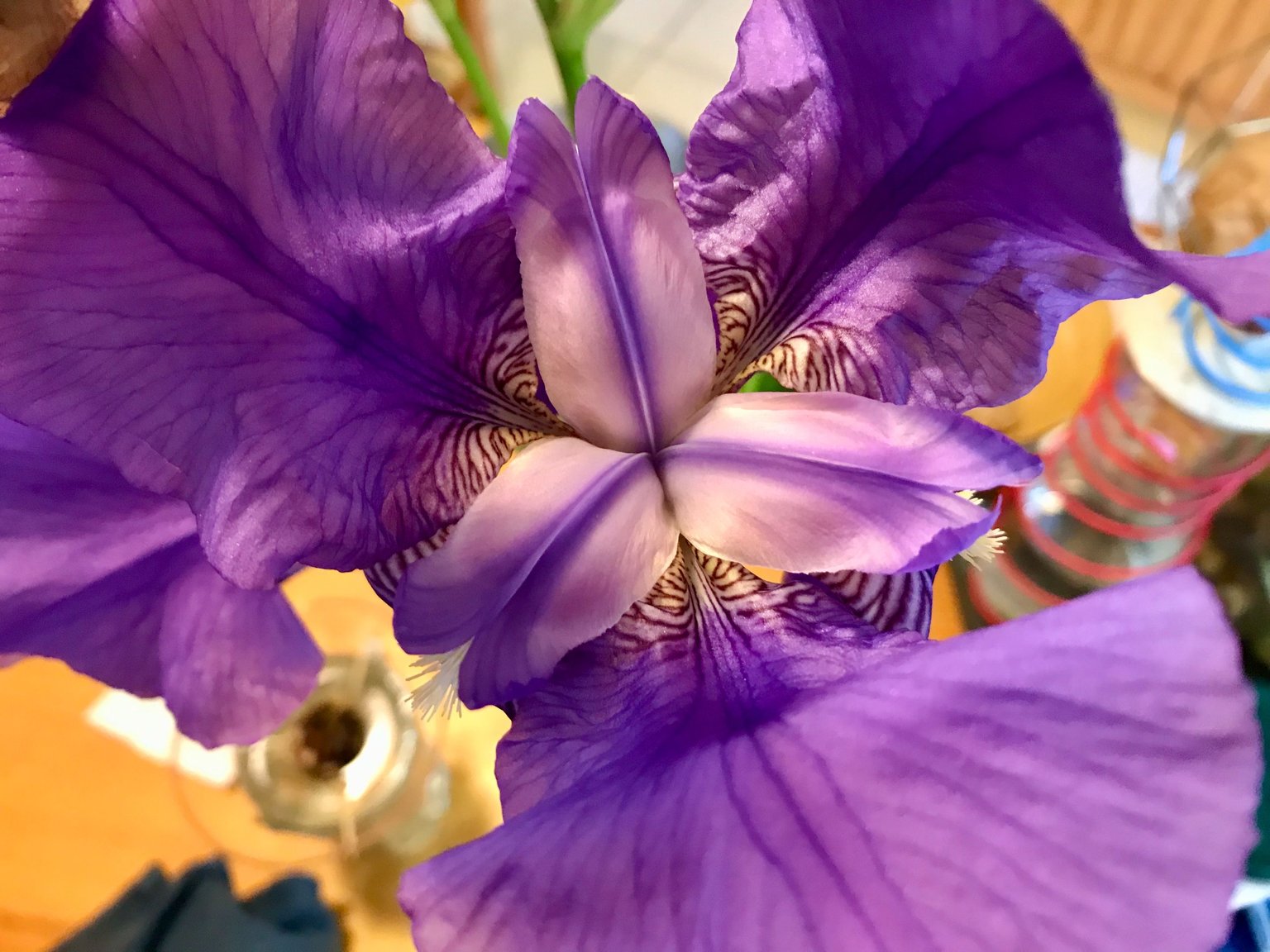
It was around Easter when I had the idea to buy three different sized ring magnets and place them over identical sized plants, observing their growth for 25 days to see if the magnets had an effect. I chose to use plants which were already developed, rather than trying this with seeds which may or may not sprout as intended. I had seen this done on YouTube with great success but wanted to try it for myself with a few adjustments.
Here you can see Esteban blessing my upcoming experiment with his eggs.
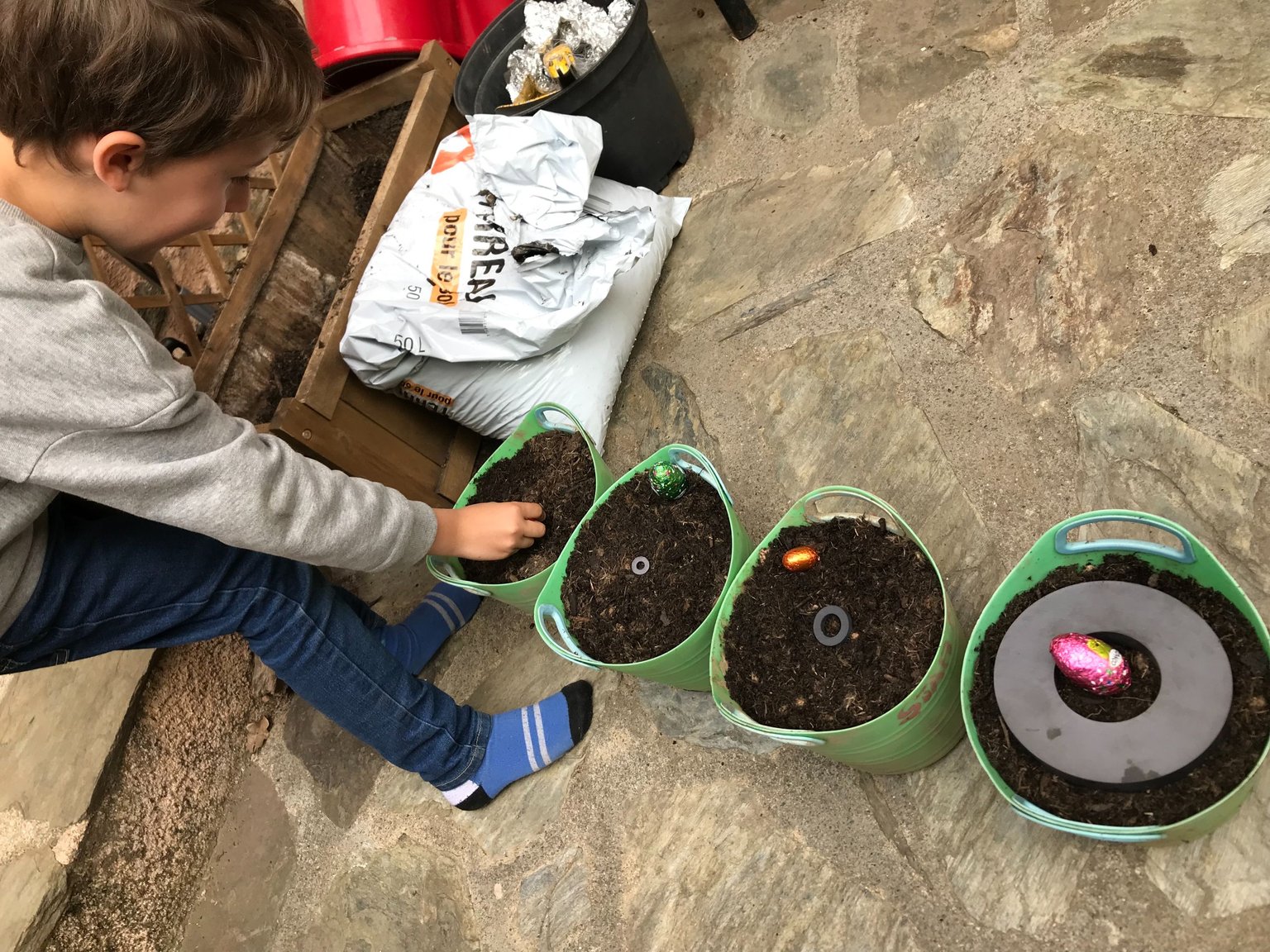
He likes to observe and sometimes help with these experiments which is I think a great start to this little man's life of exploration.
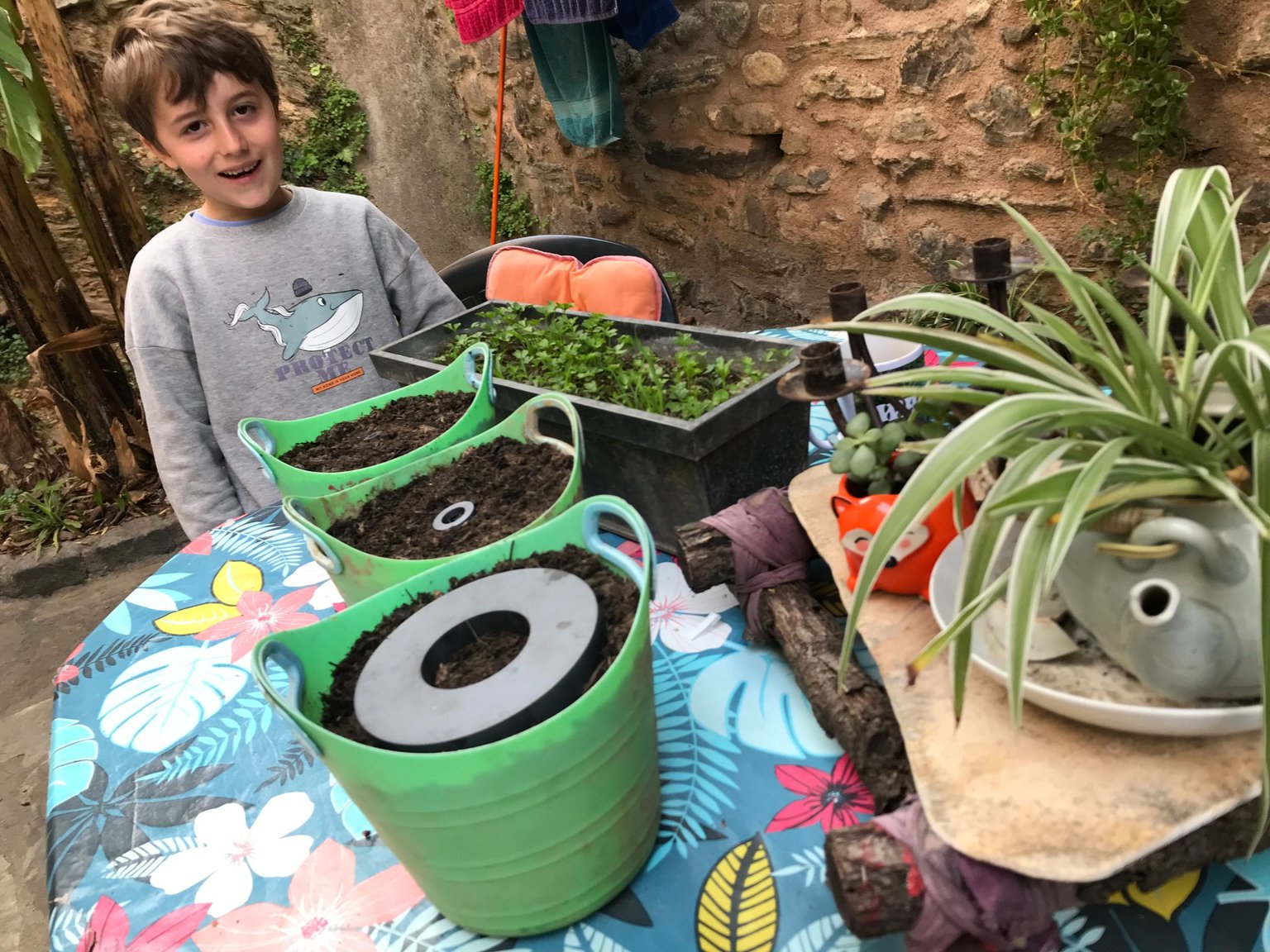
This is the tub of parsley which was planted one month earlier.
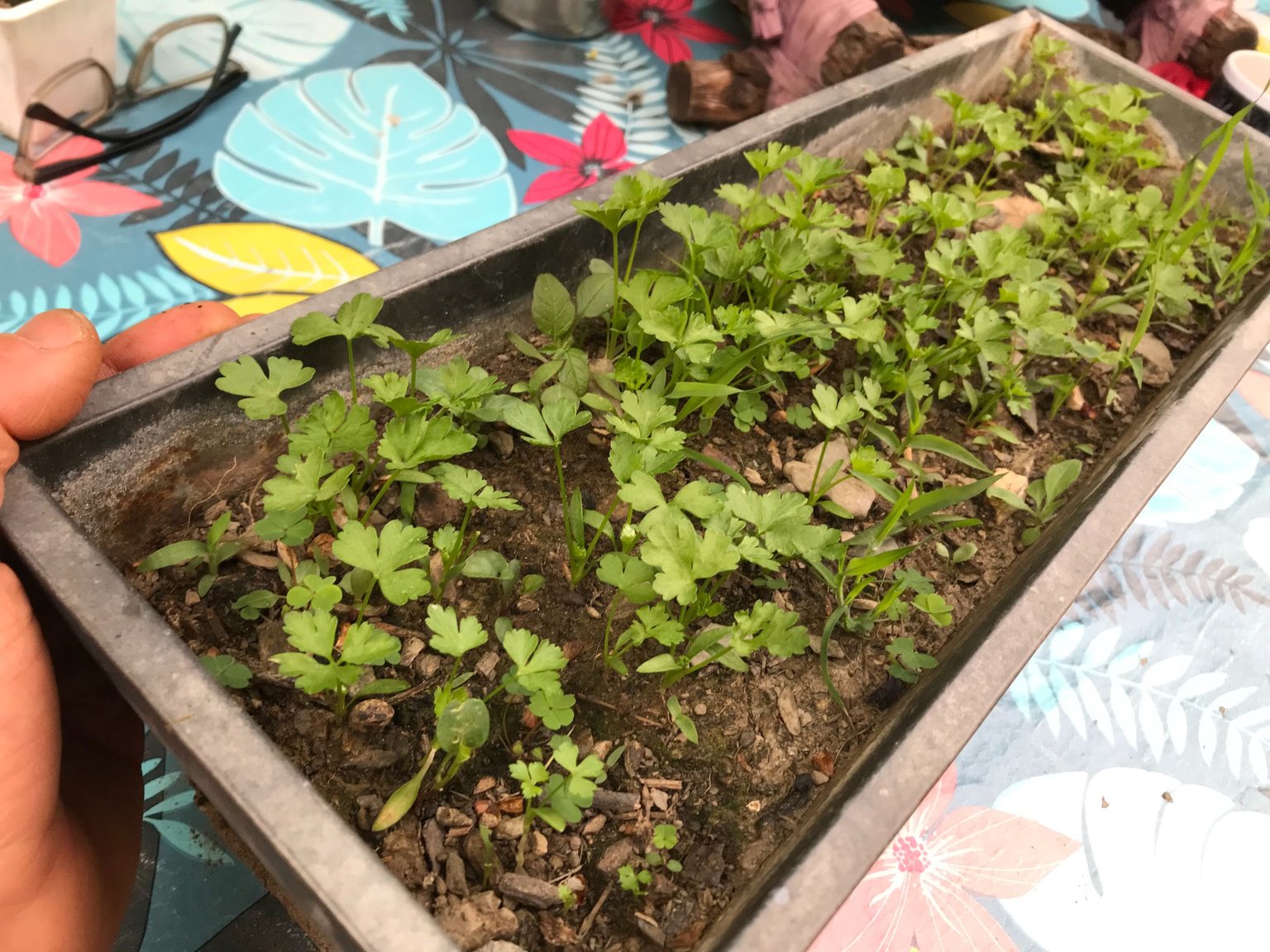
I removed four plants from this end of the tub.
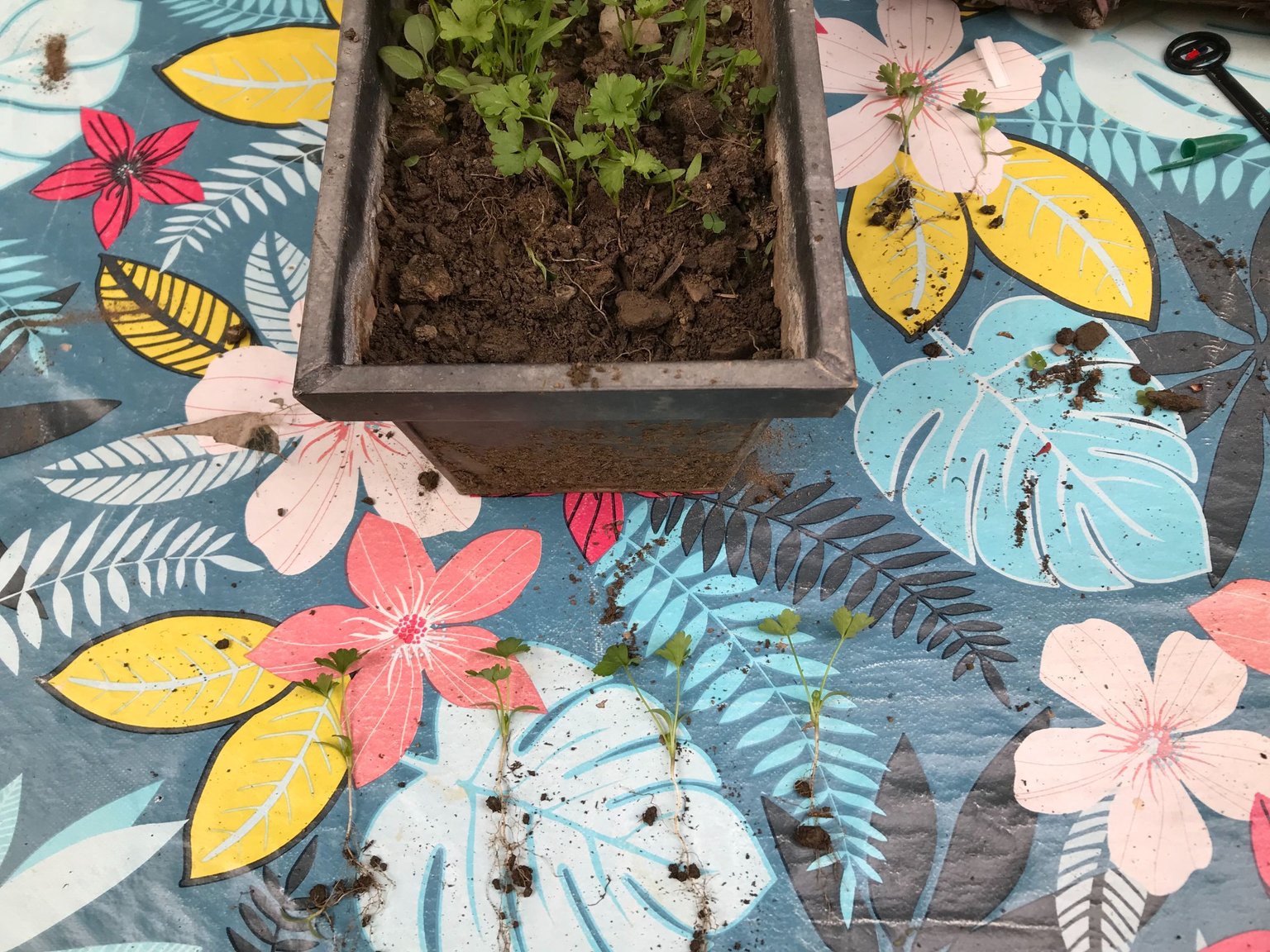
Making an effort to find plants which were similar in size.
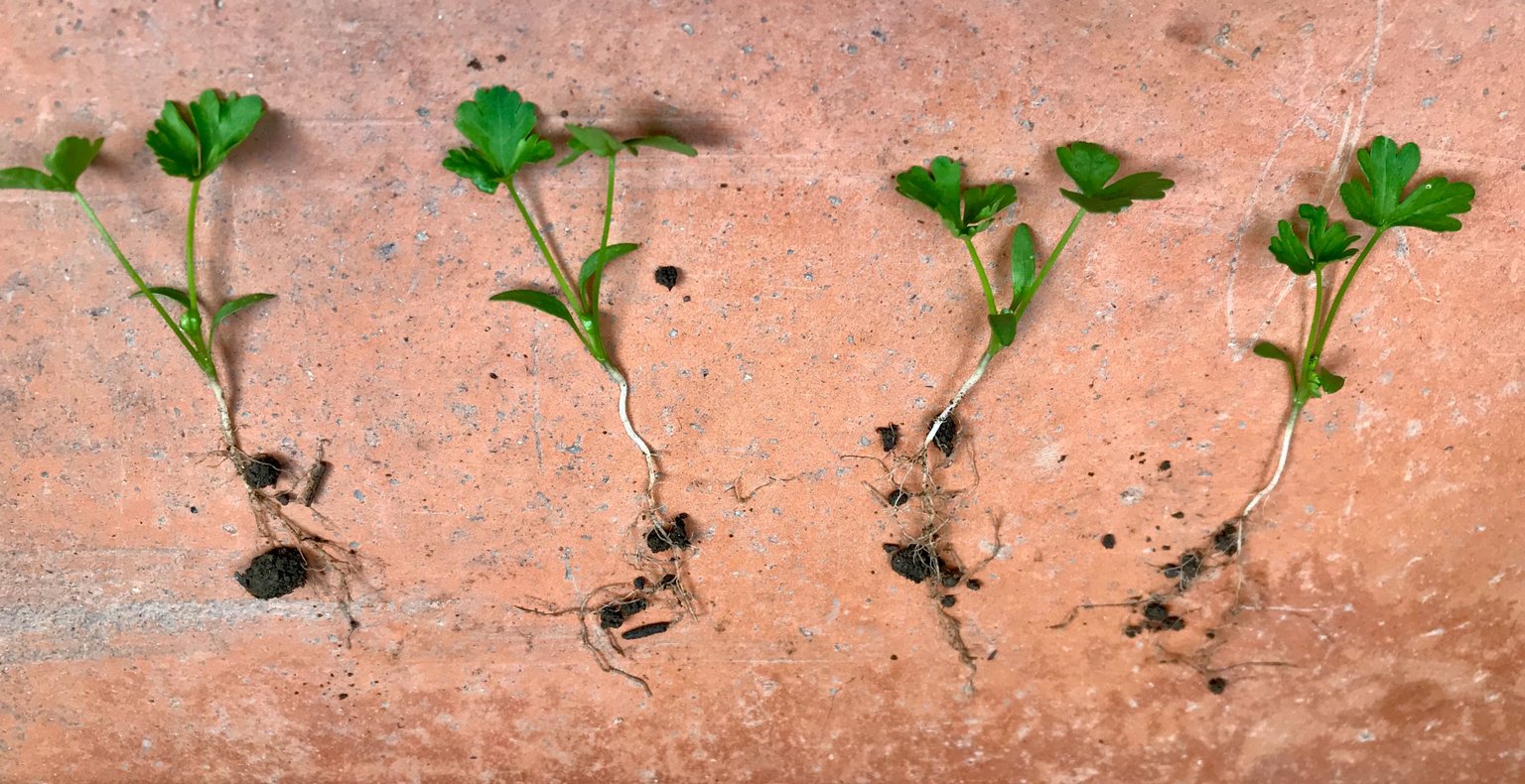
As I mentioned, this seems a better comparison than with seeds which will very likely differ in the way they grow. Better to do it this way and select four plants which have already grown to be the same height.
For the purposes of this experiment I am placing the ferrite magnets with their south end facing up. This can be verified using a compass.
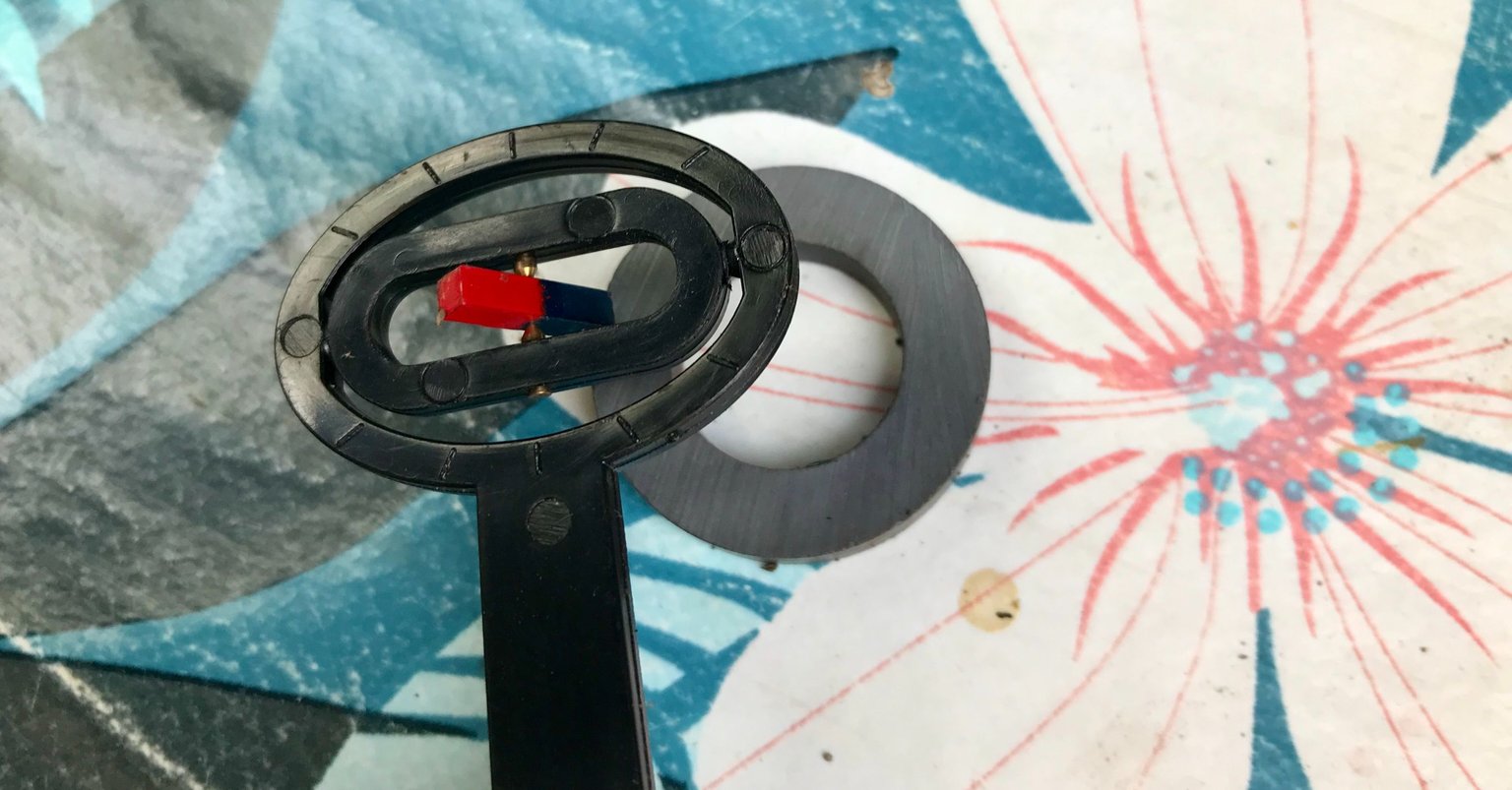
The end of the compass which normally points north will be attracted to the south side of the magnet.
Then I placed each parsley plant inside the magnet like this.
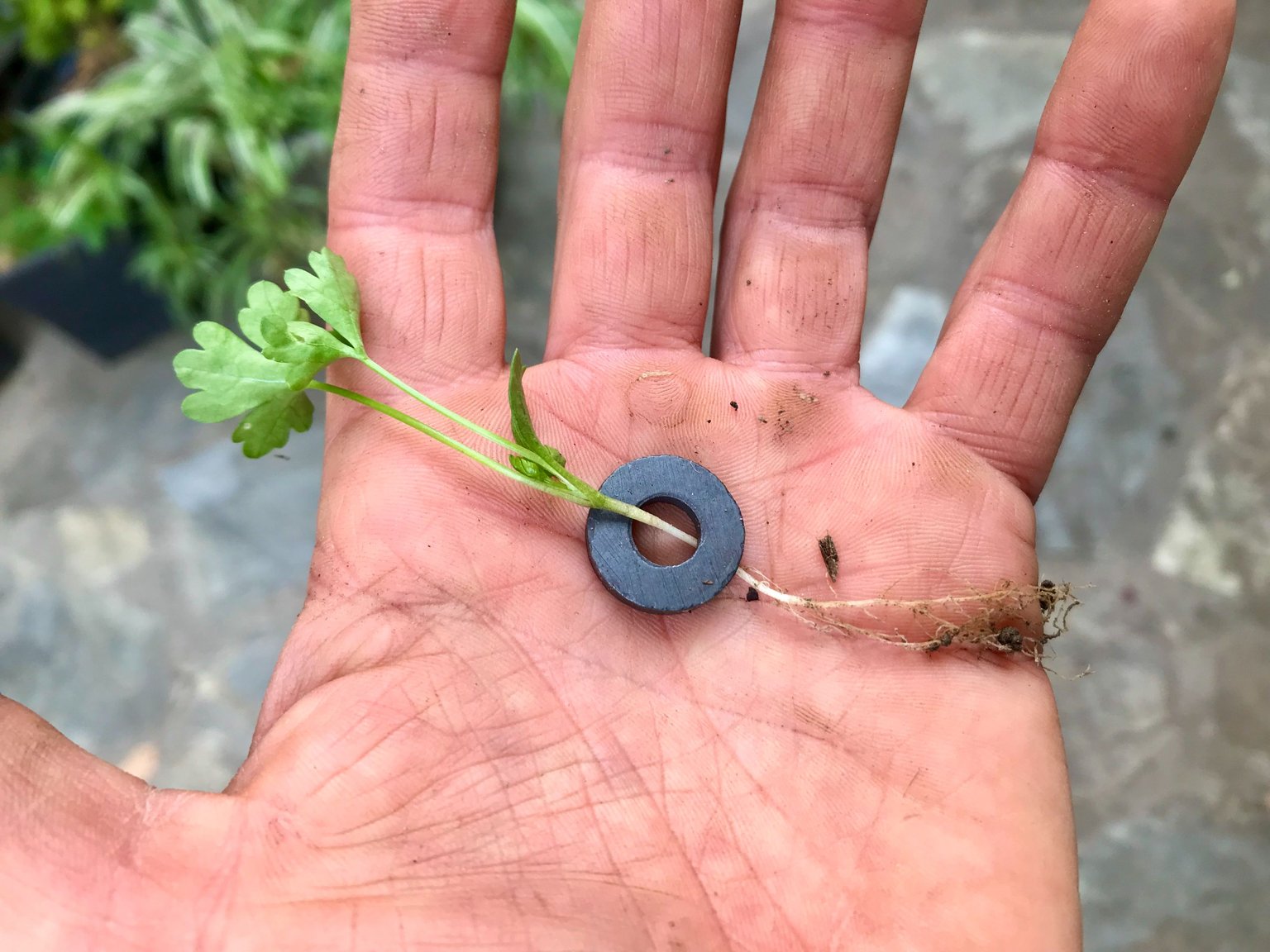
Planting them in identical tubs with identical soil.
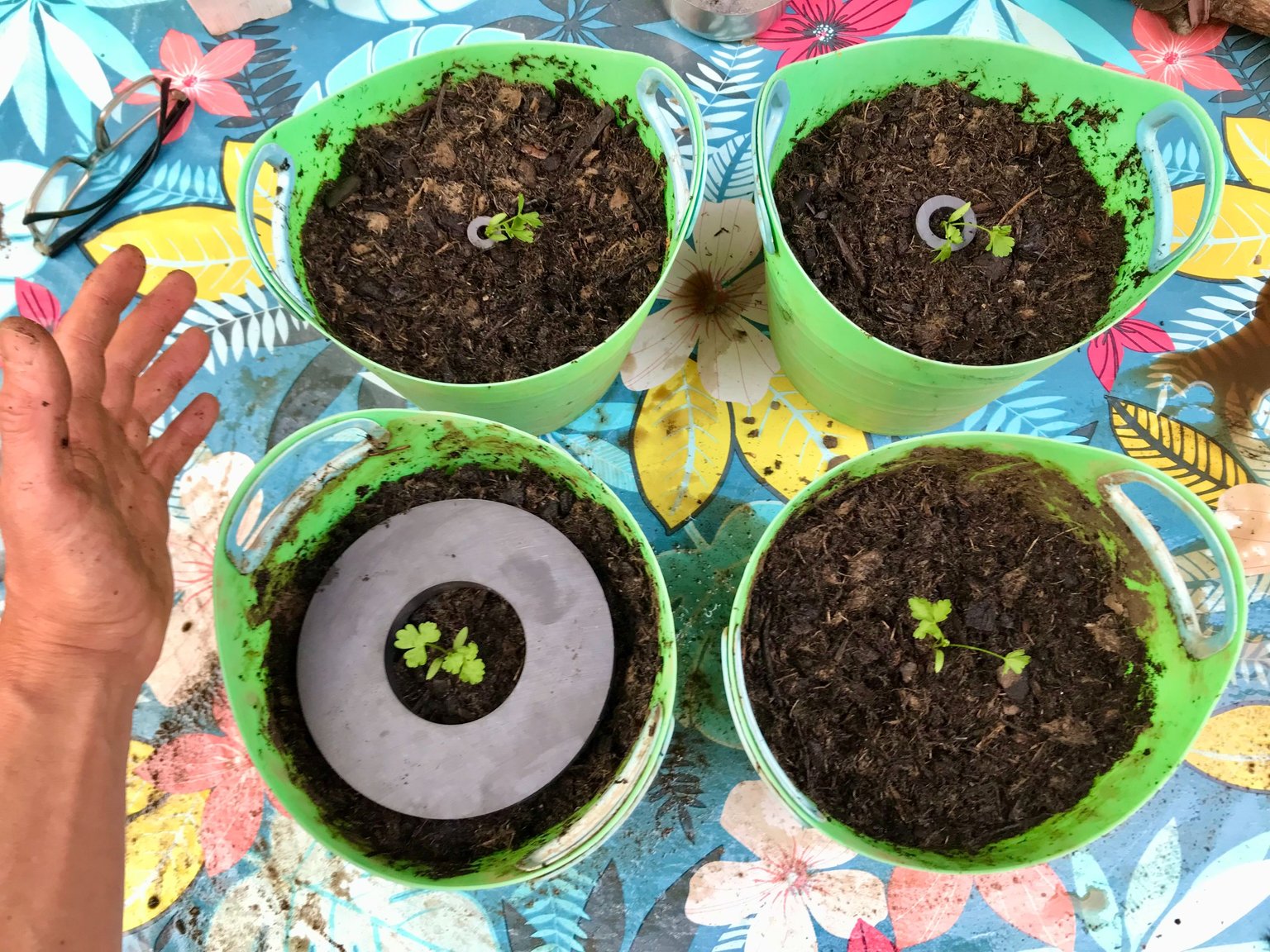
Day 1 - April 10th
All four parsley seen here.

On the same day I also planted these three basil.
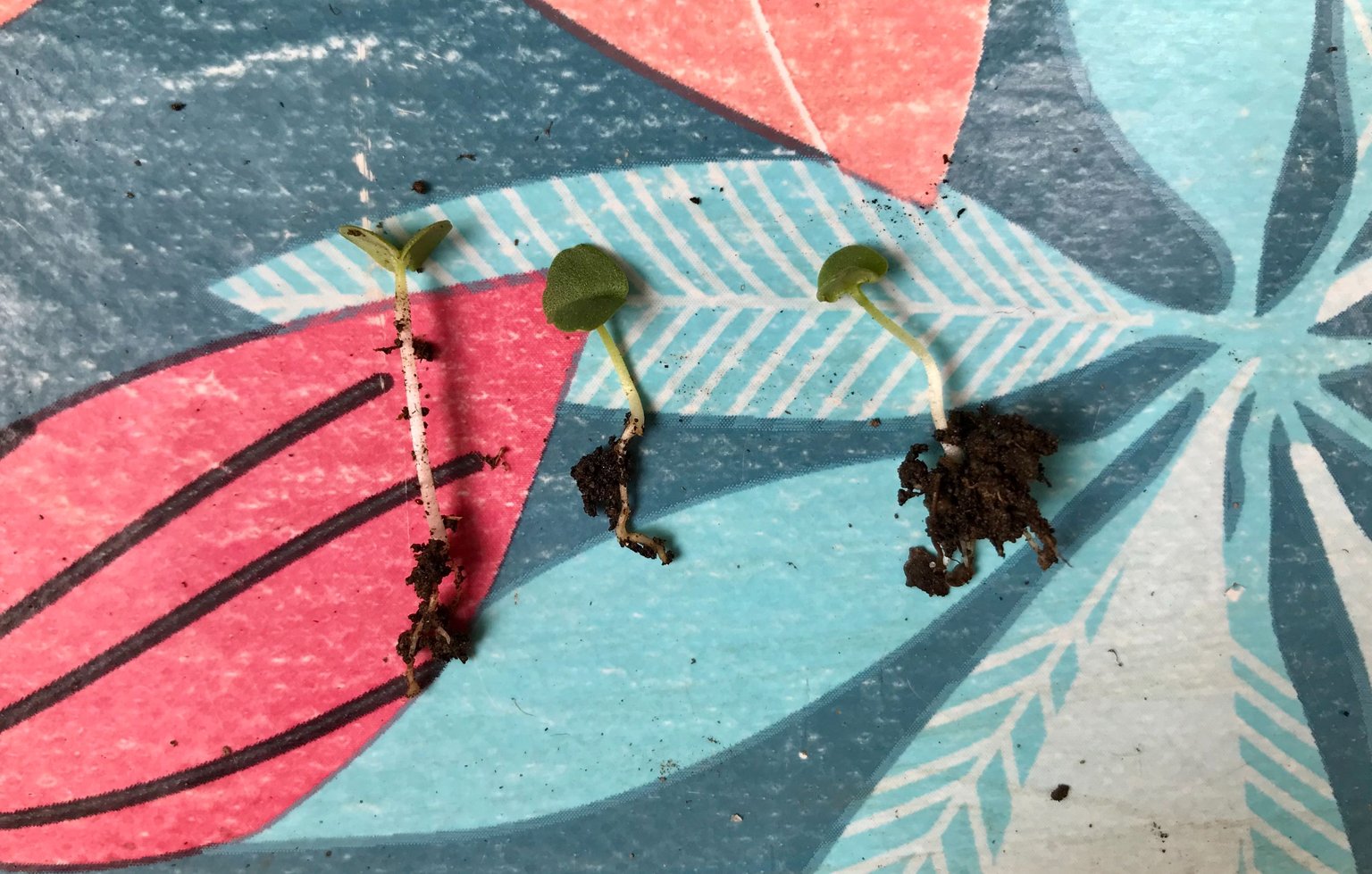
I only have one big magnet so this test involved the two smaller magnets and a control group.
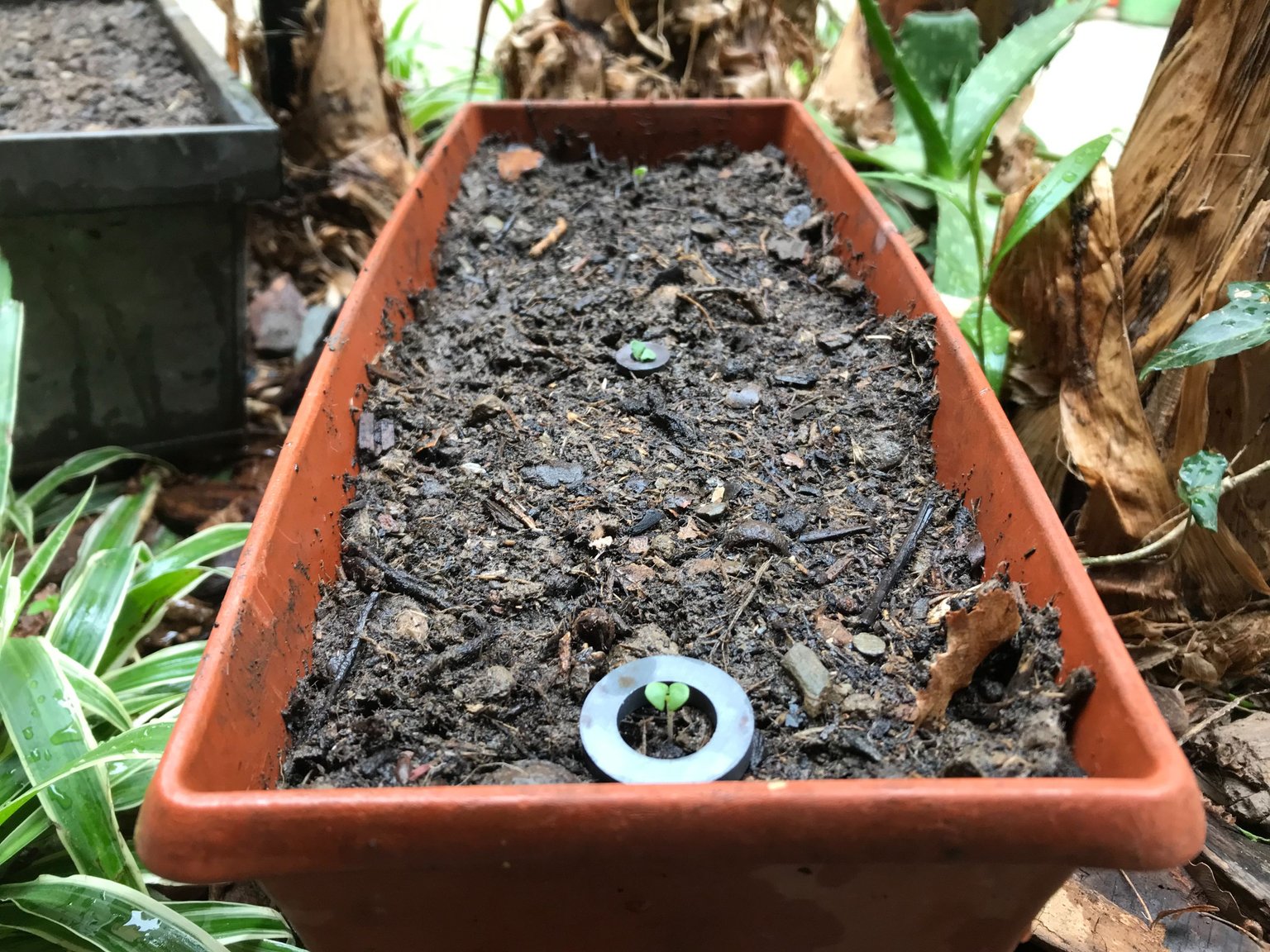
I like this test because the plants are close together and there can be no argument than an energetic line is affecting one of them.
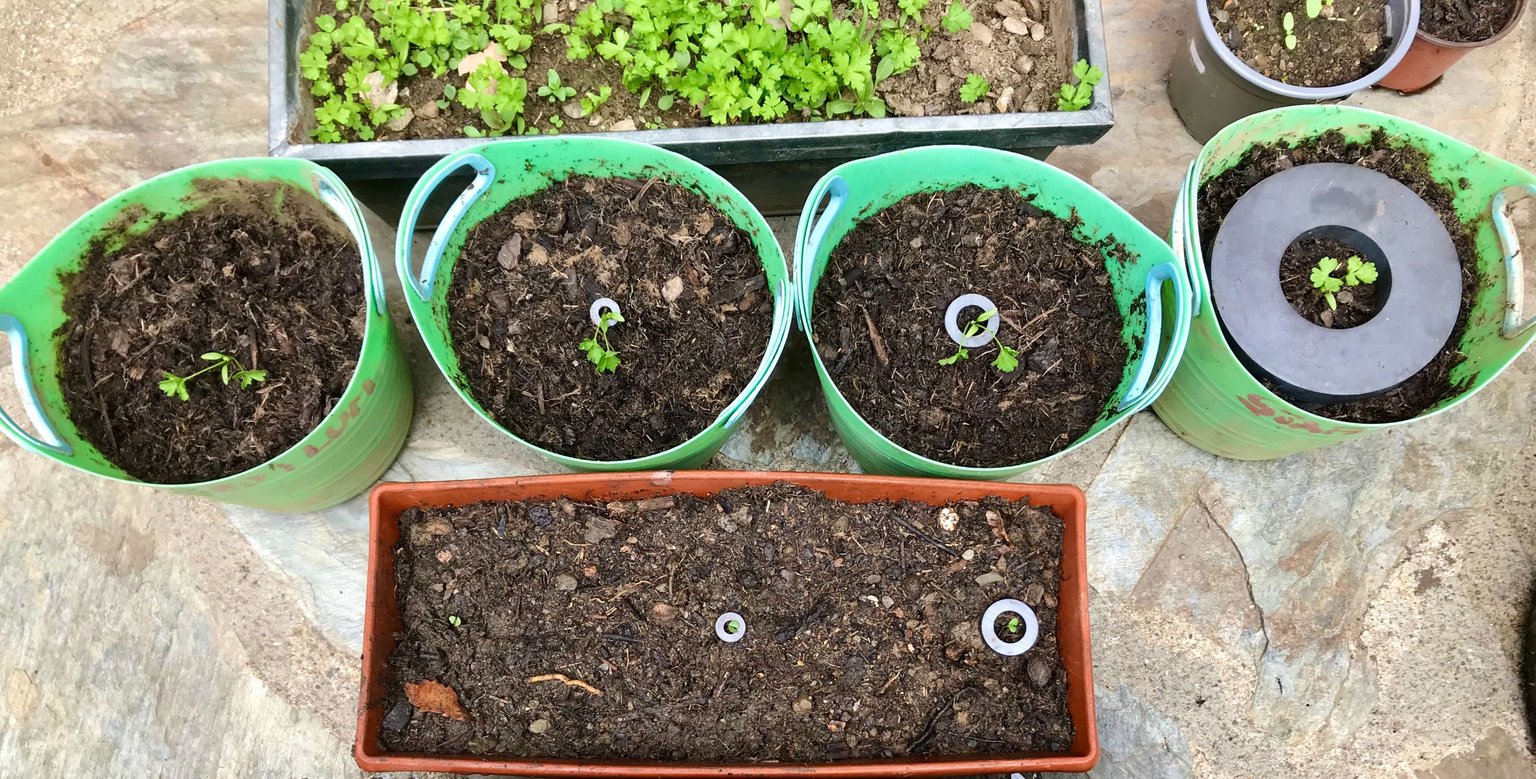
To be sure I have dowsed extensively and can confirm that this area of our courtyard has no energetic lines which may potentially interfere with the results of this experiment.
Later that same day I noticed how all of the parsley plants were drooping (this is normal after plantation) except one.

There was no debate.
The plant with the largest magnet was standing pert upright, like it had been growing there all its life.

While all the others drooped over like this.
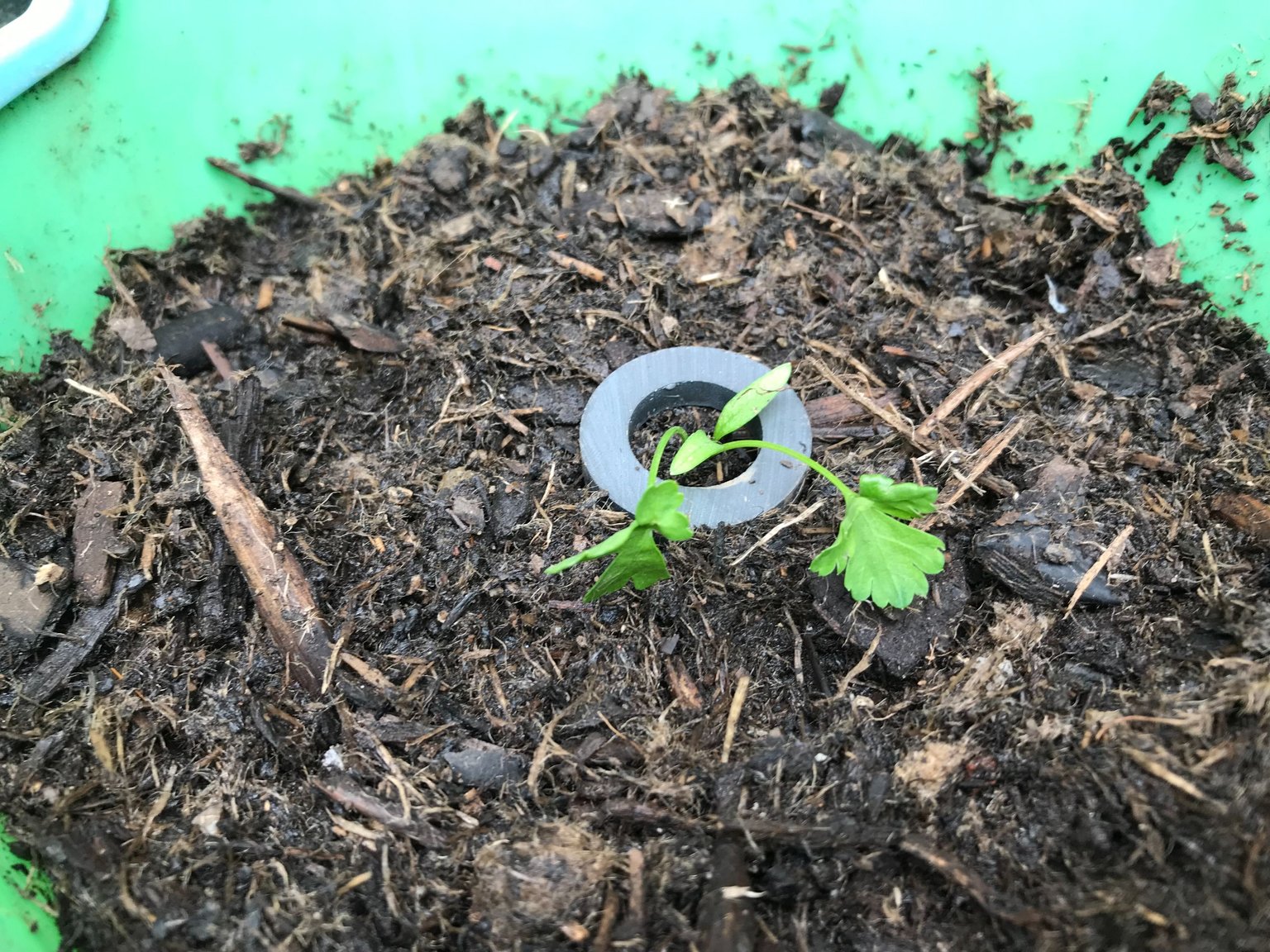
An unexpected result before the end of the first day! Very encouraging to see.
Day 2 - April 12th
The largest magnet was still supporting its occupant perfectly (let's call it M1) while the other two magnets (M2 & M3) had a story of their own.
The control group was drooping flat to the ground. M3 was drooping, but less so. While M2 was starting to stand upright now, the best of the three.

M1 seen here on the same day, for reference.
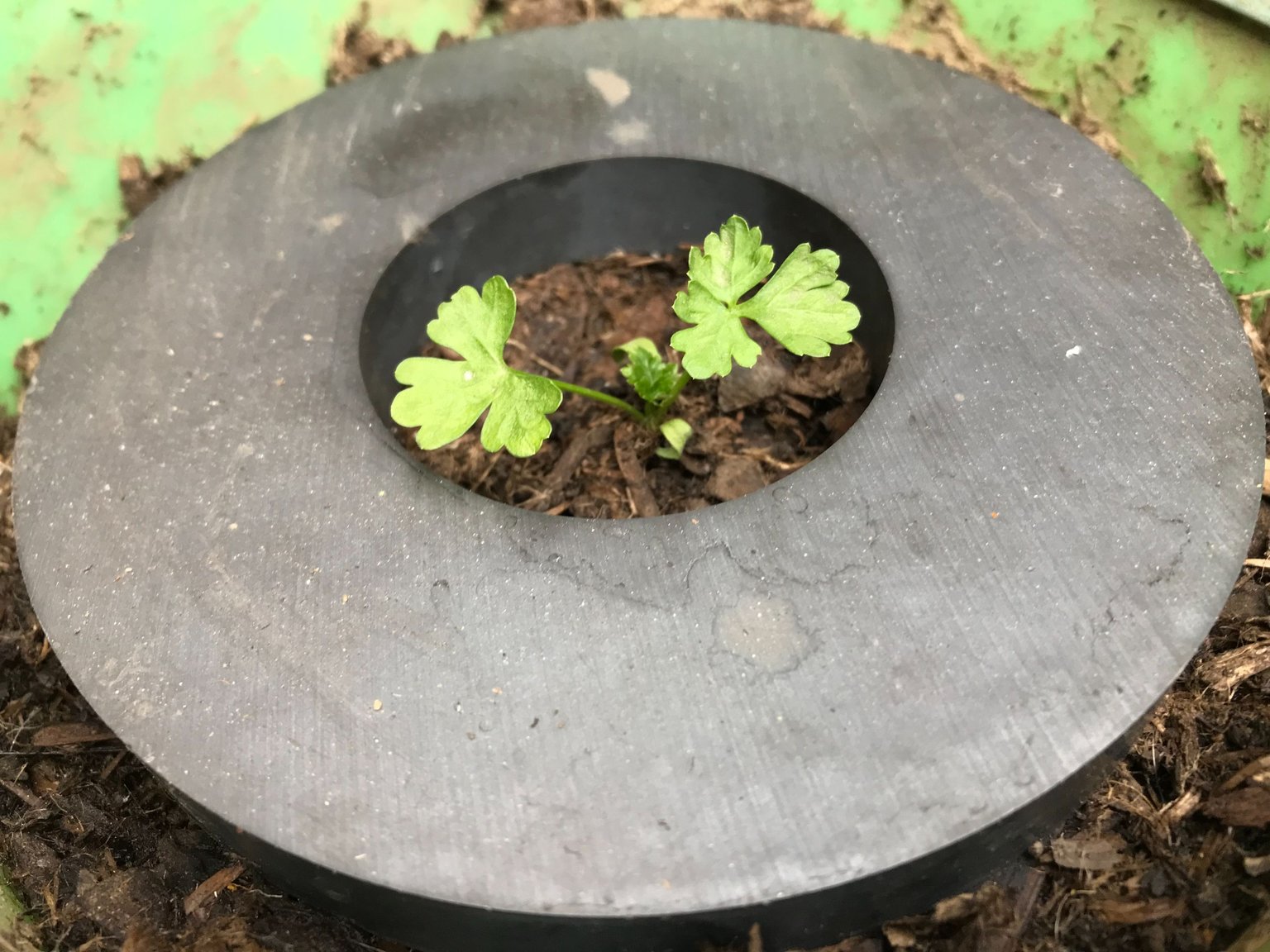
Day 4 - April 14th
A progression of the same story, now with only the control group drooping excessively.
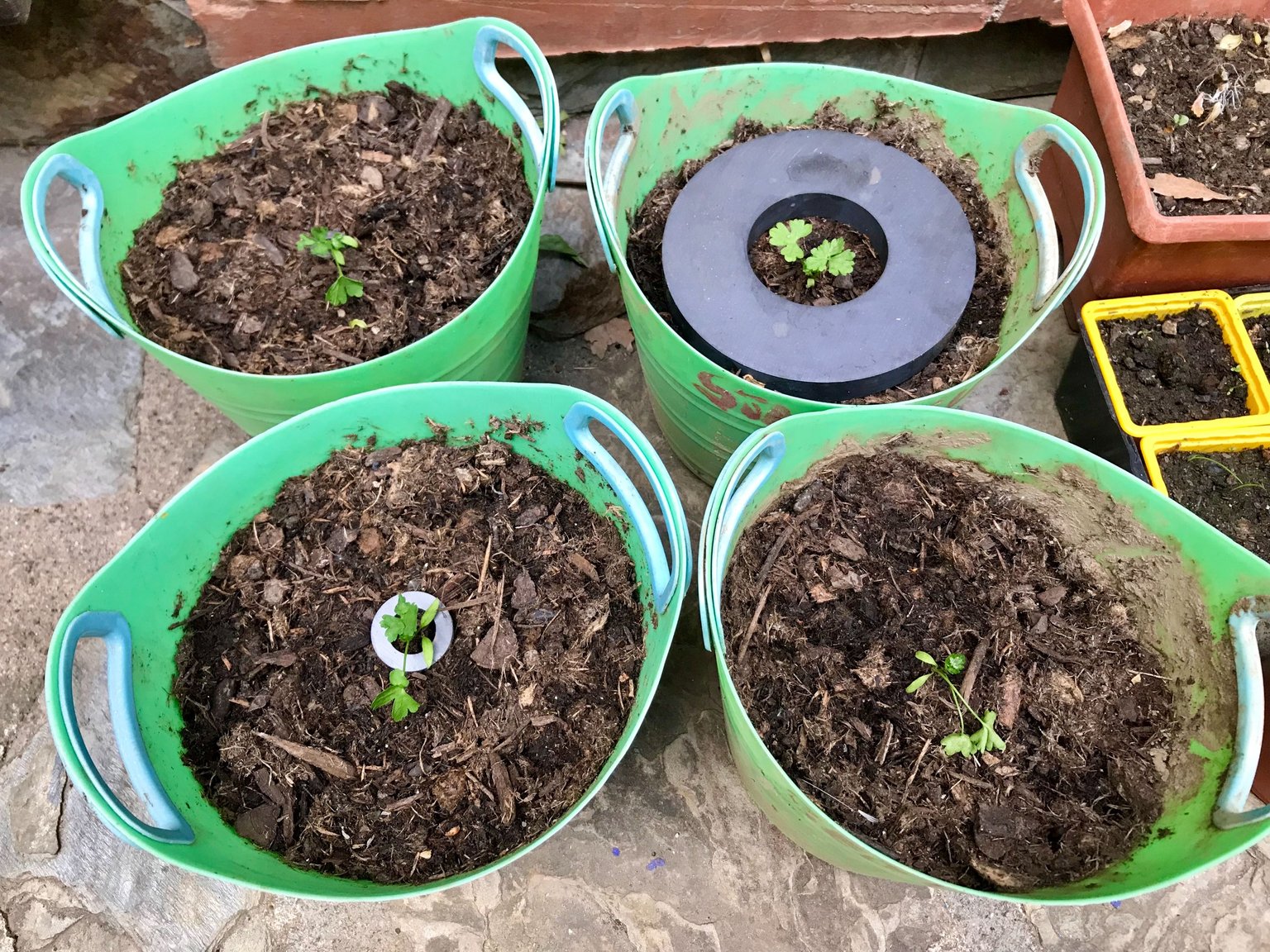
A close-up seen here of the control group with both main leaves flat to the ground still.

M3 (both main leaves off the ground)
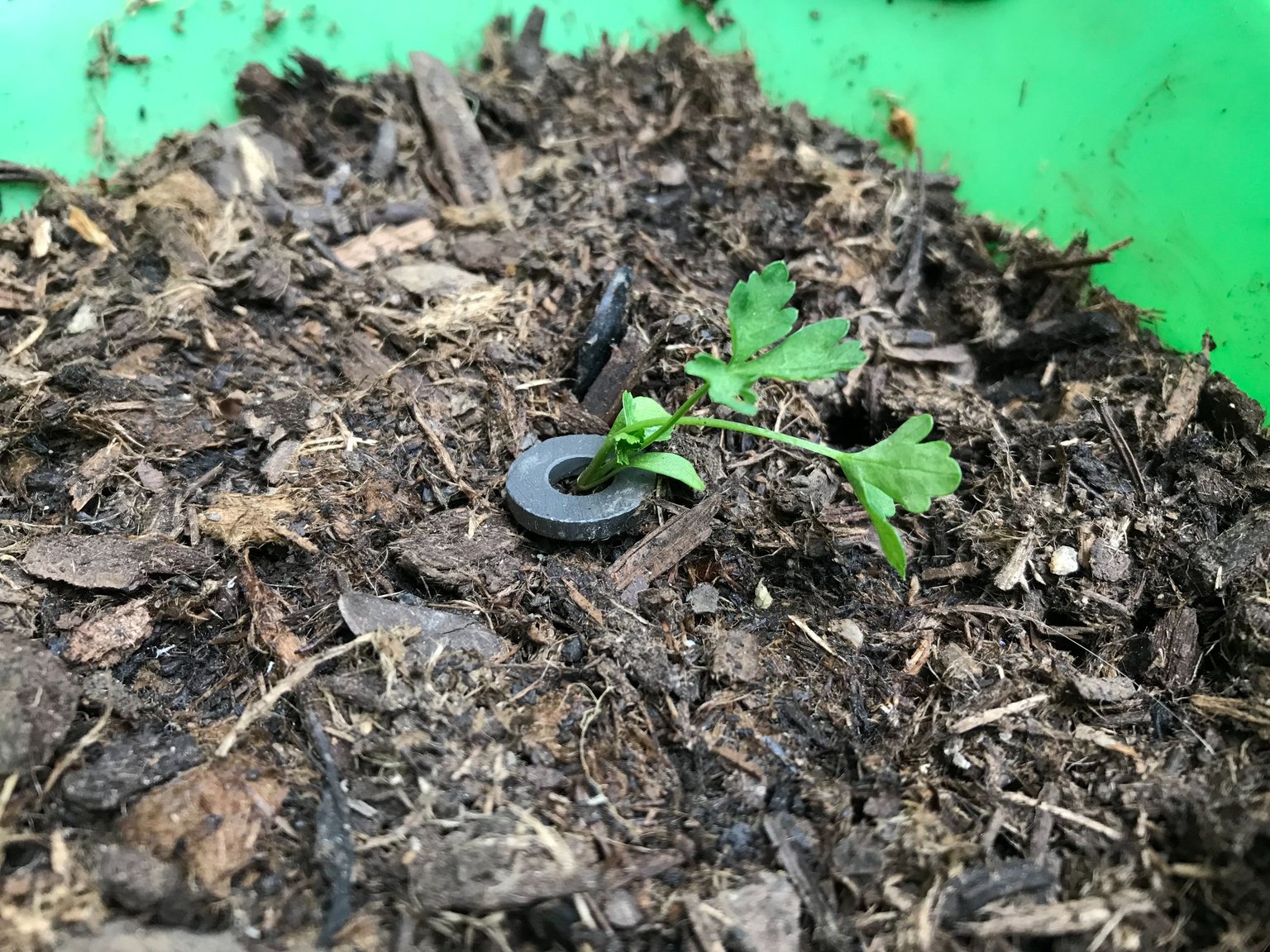
M2 (both main leaves off the ground with one of them pointed upward, fully recovered)

M1 (no change, still perfectly upright)
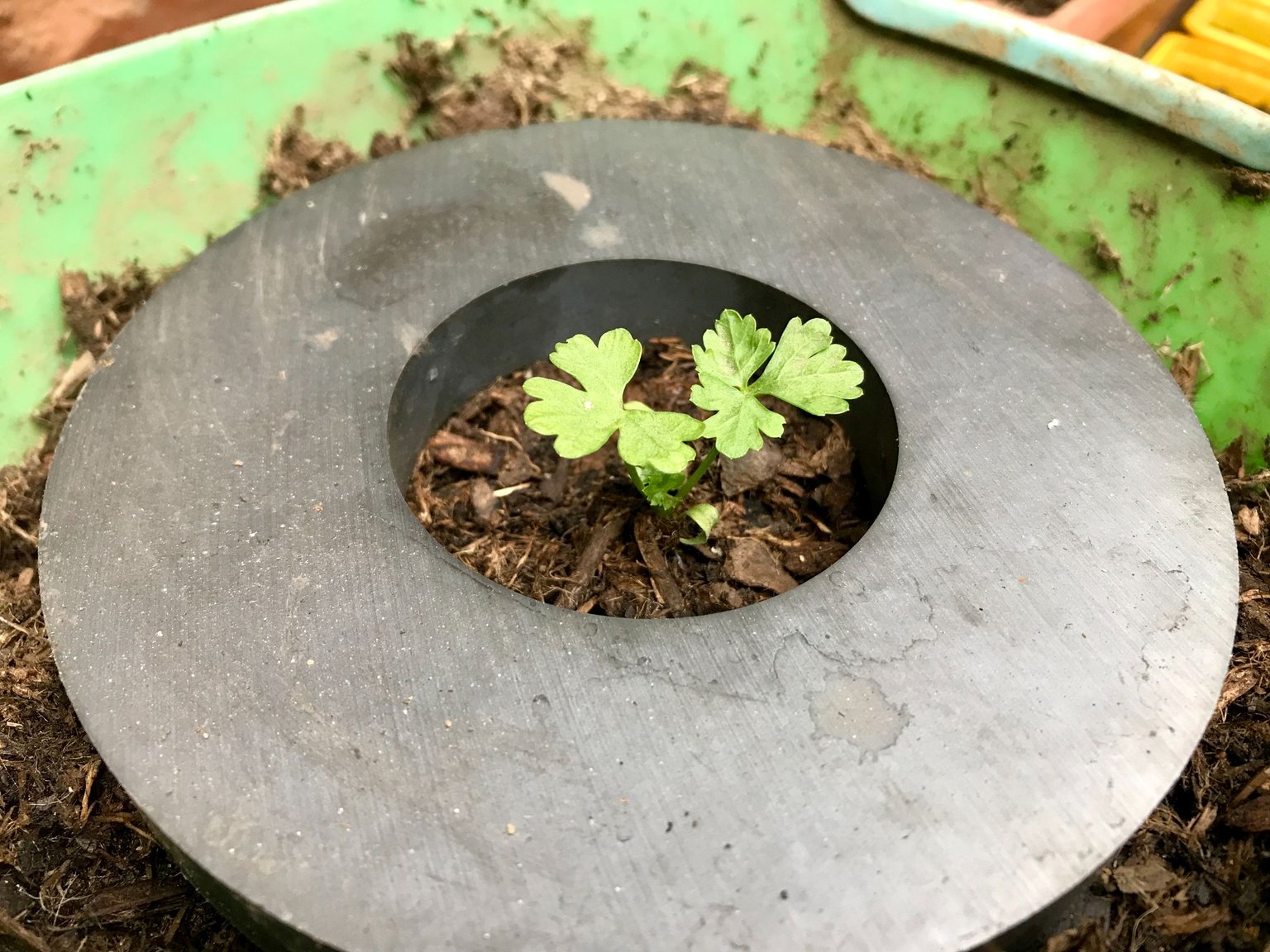
Day 7 - April 17th (basalt experiment begins)
I began another experiment today with three groups of random sunflower seeds from last year's harvest. Group 1 was a control. Group 2 had basalt mixed with the soil. Group 3 had basalt and magnets placed like this around the edges of each pot (south polarity facing inwards).
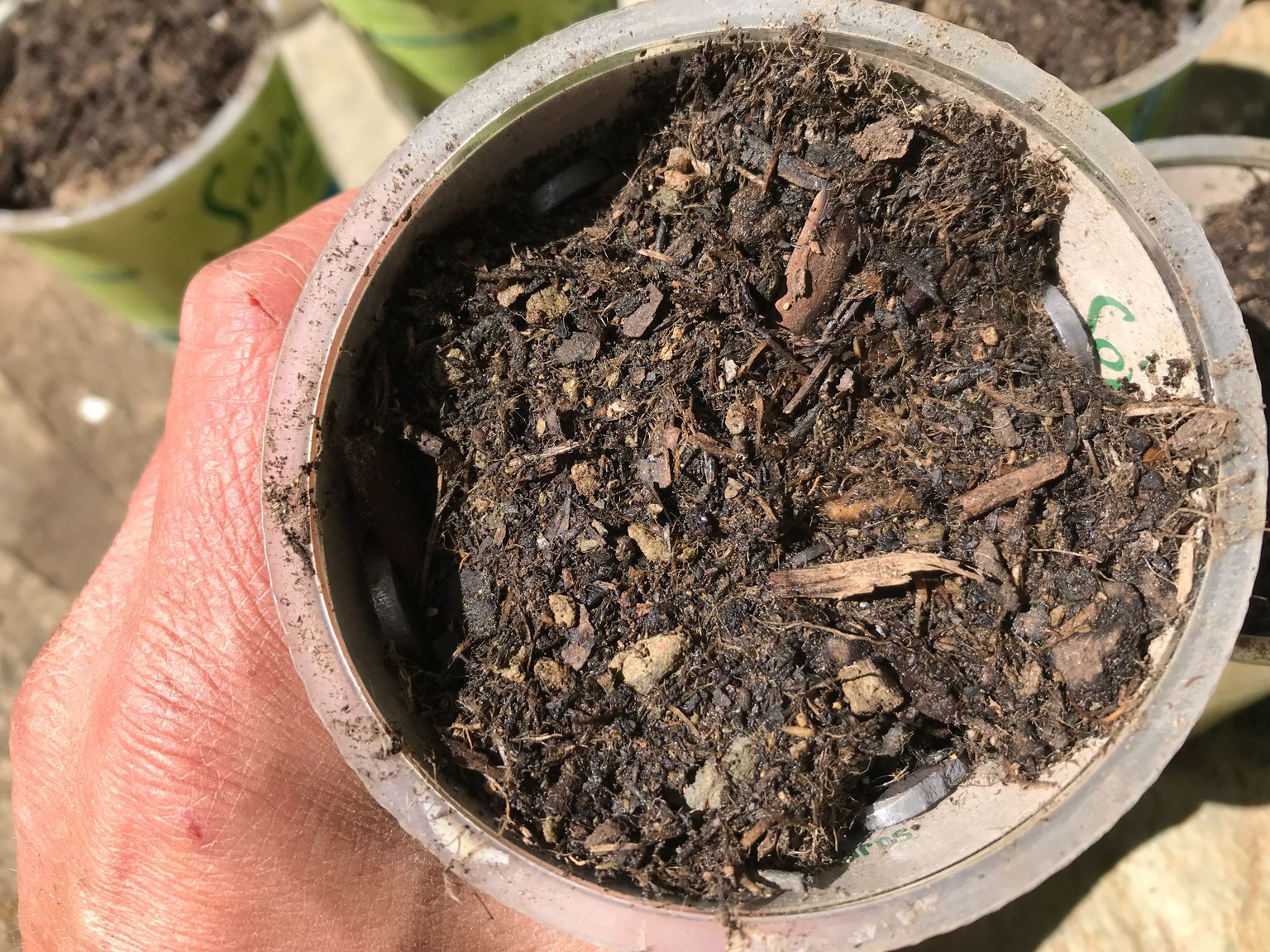
On the same day I also began comparative tests with magnets and different flower varieties.
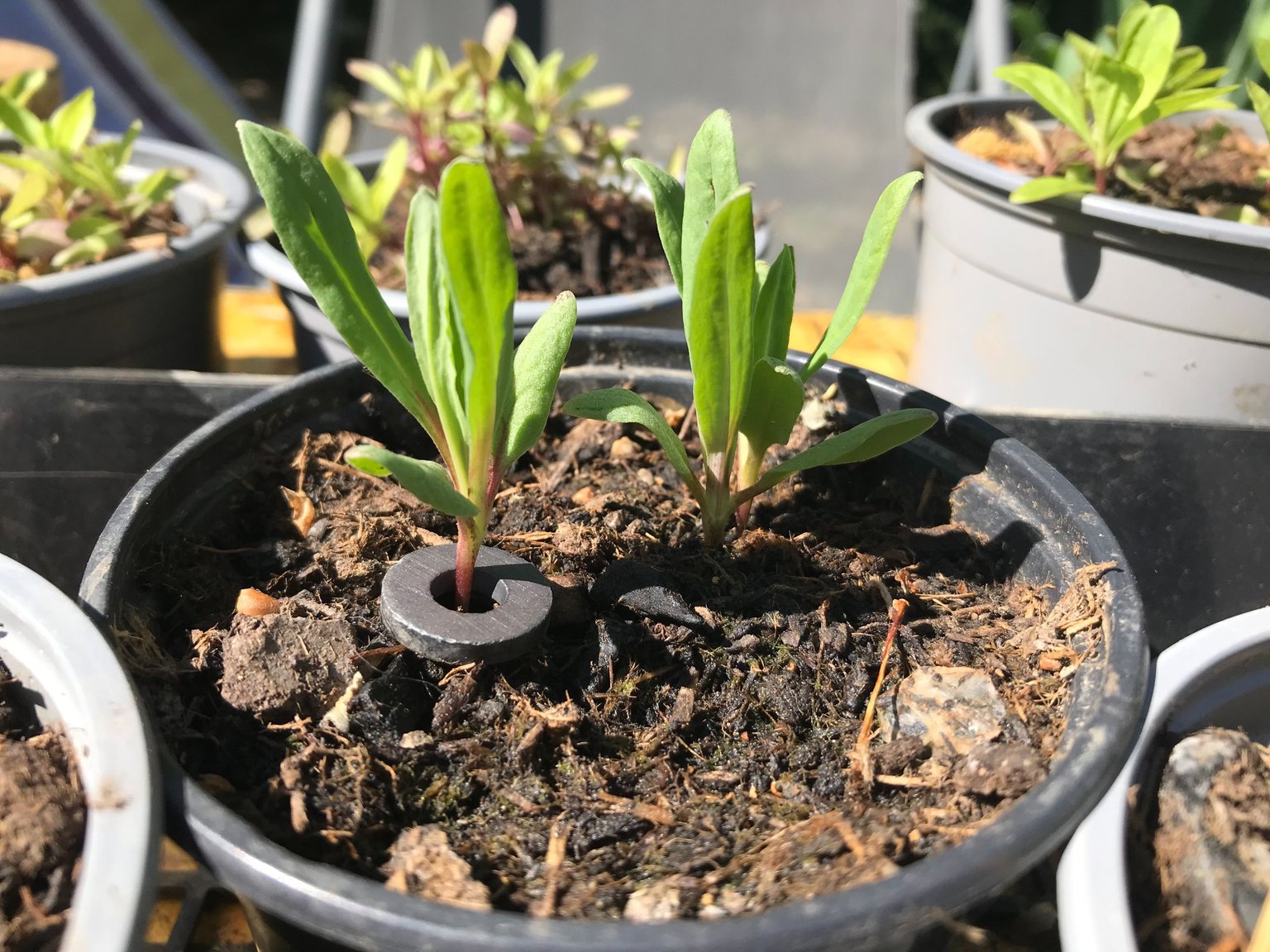
With another test to see if clay pots (which are paramagnetic) would react well to four magnets placed like this.
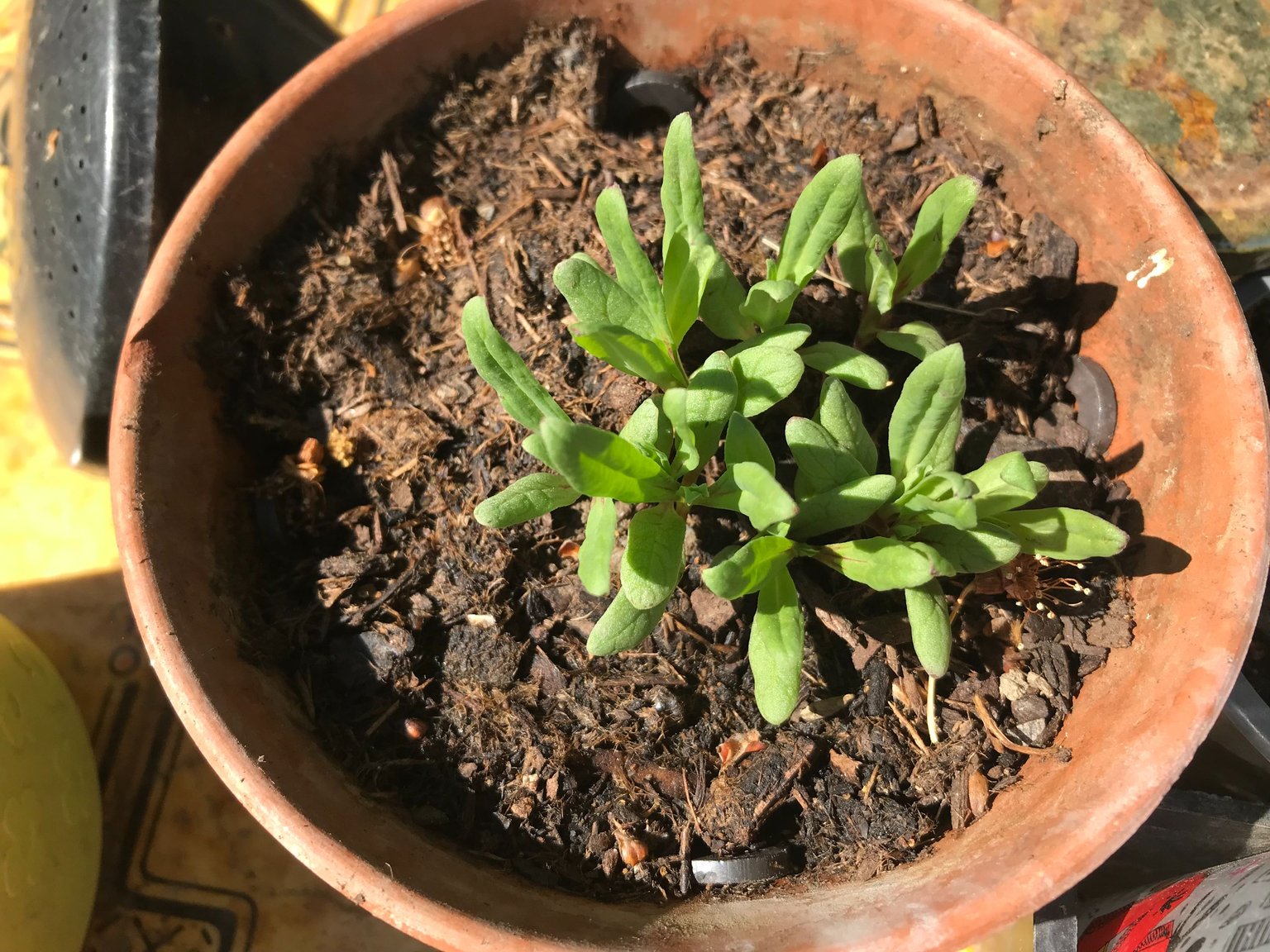
Lastly I began an experiment in which I poured radish seeds and their water through this magnetised tube!
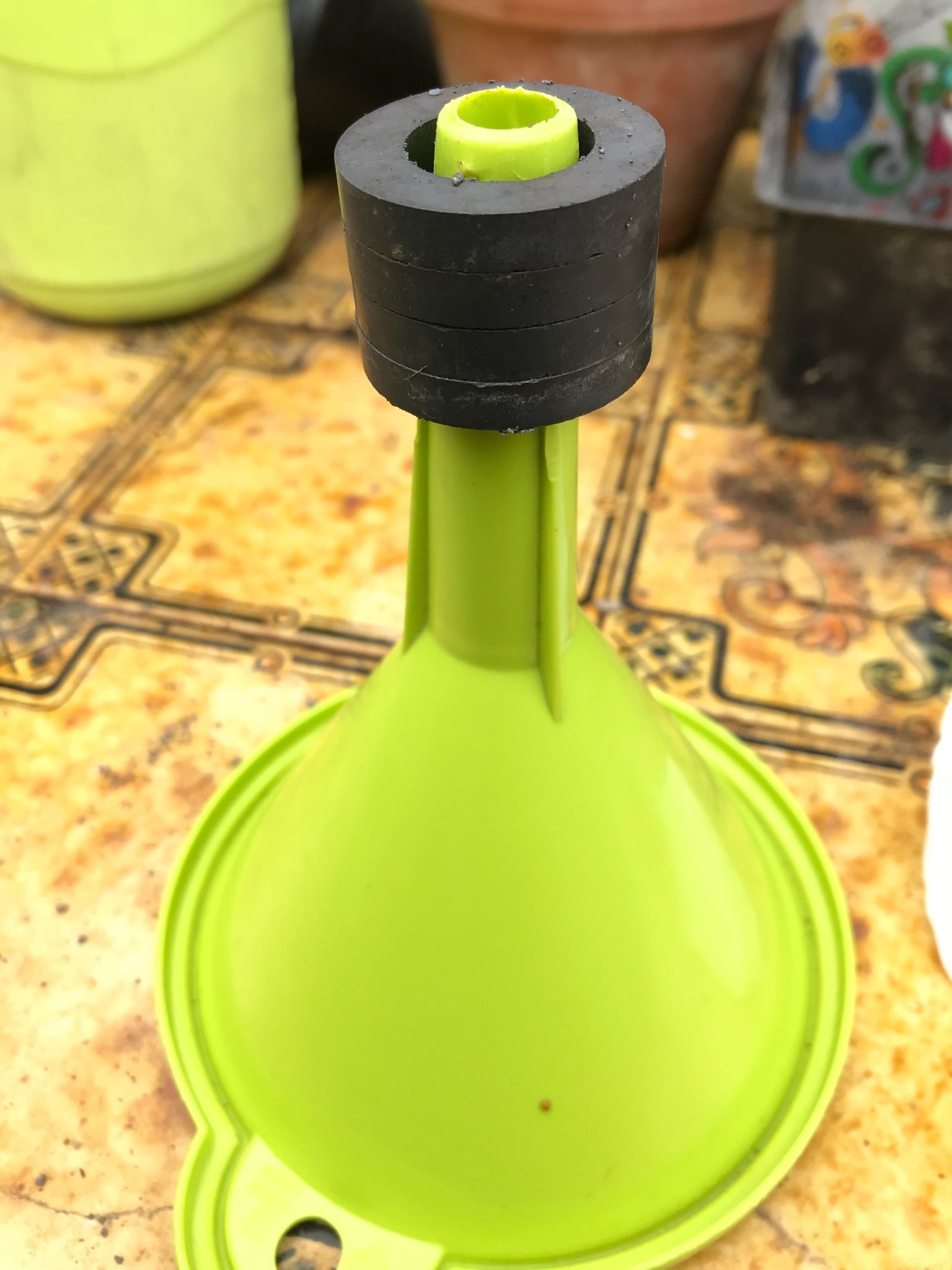
But in the interest of keeping this post as focused as possible I will jump now to the final results of all the three main experiments mentioned here.
Day 25 - May 4th: The results (parsley/basil/sunflowers)
The parsley & basil experiments can be seen in this shot, amongst other things.
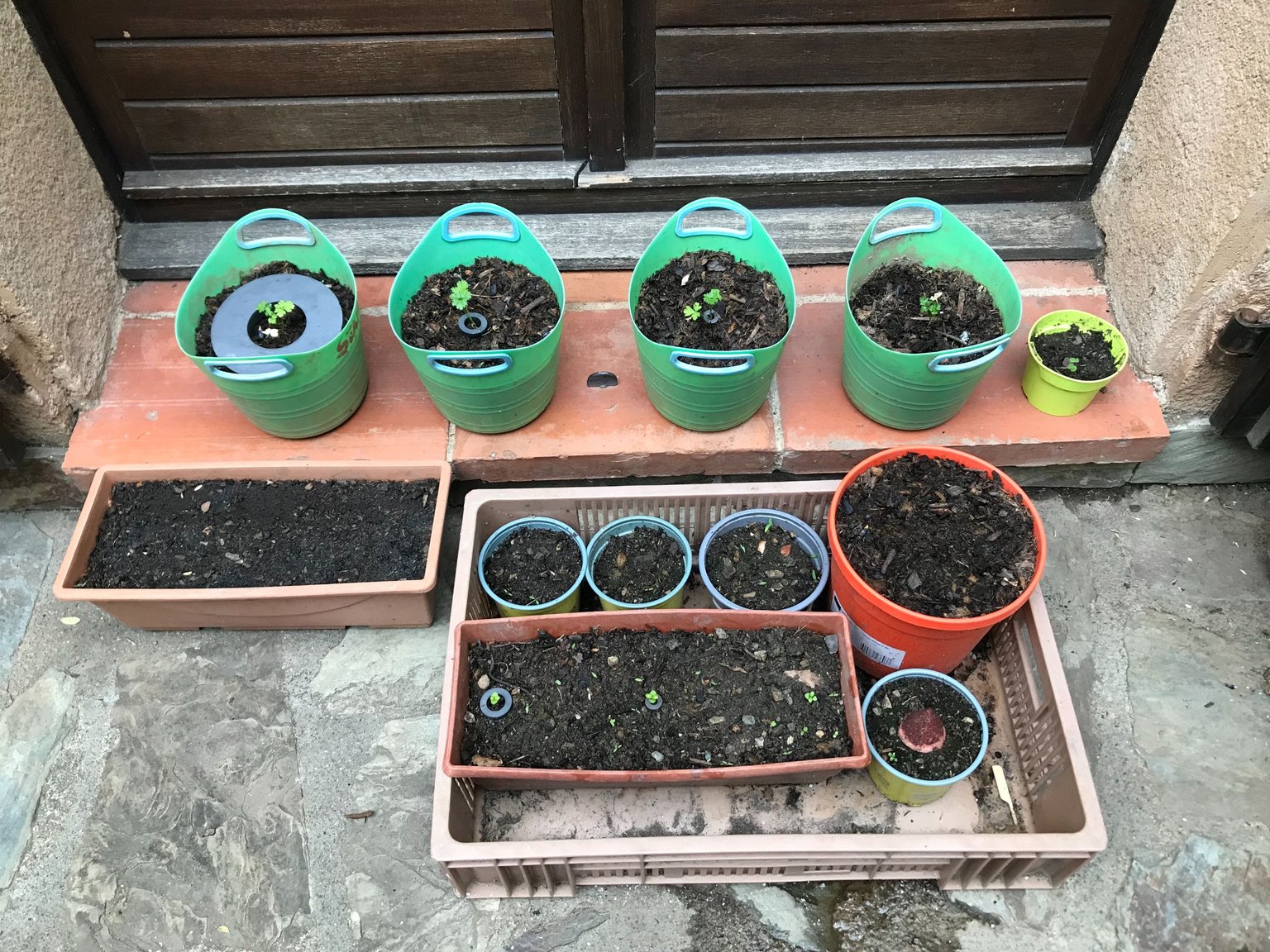
The tallest and healthiest parsley plant is now M2
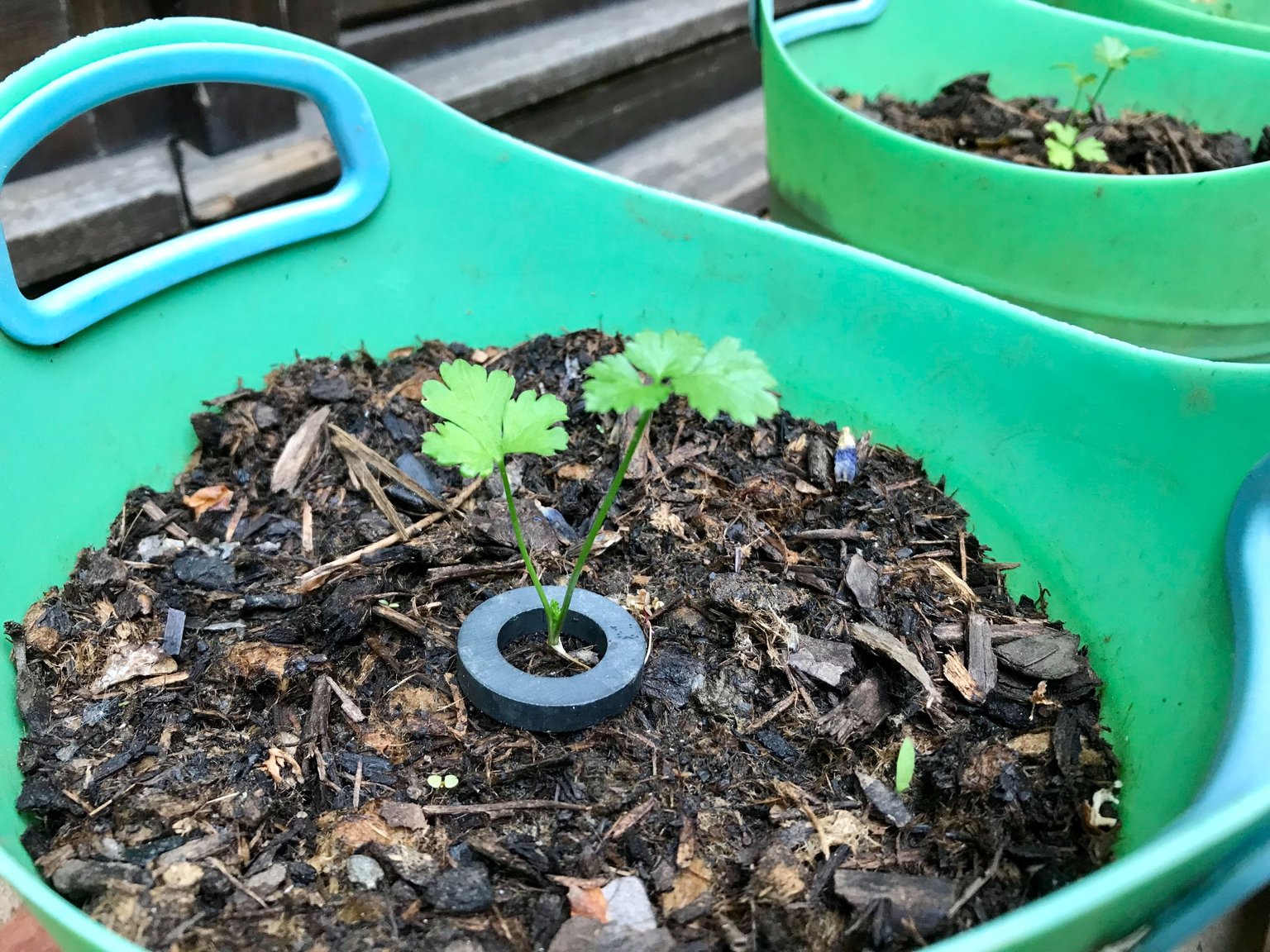
M1 is the second tallest and has started to turn yellow.
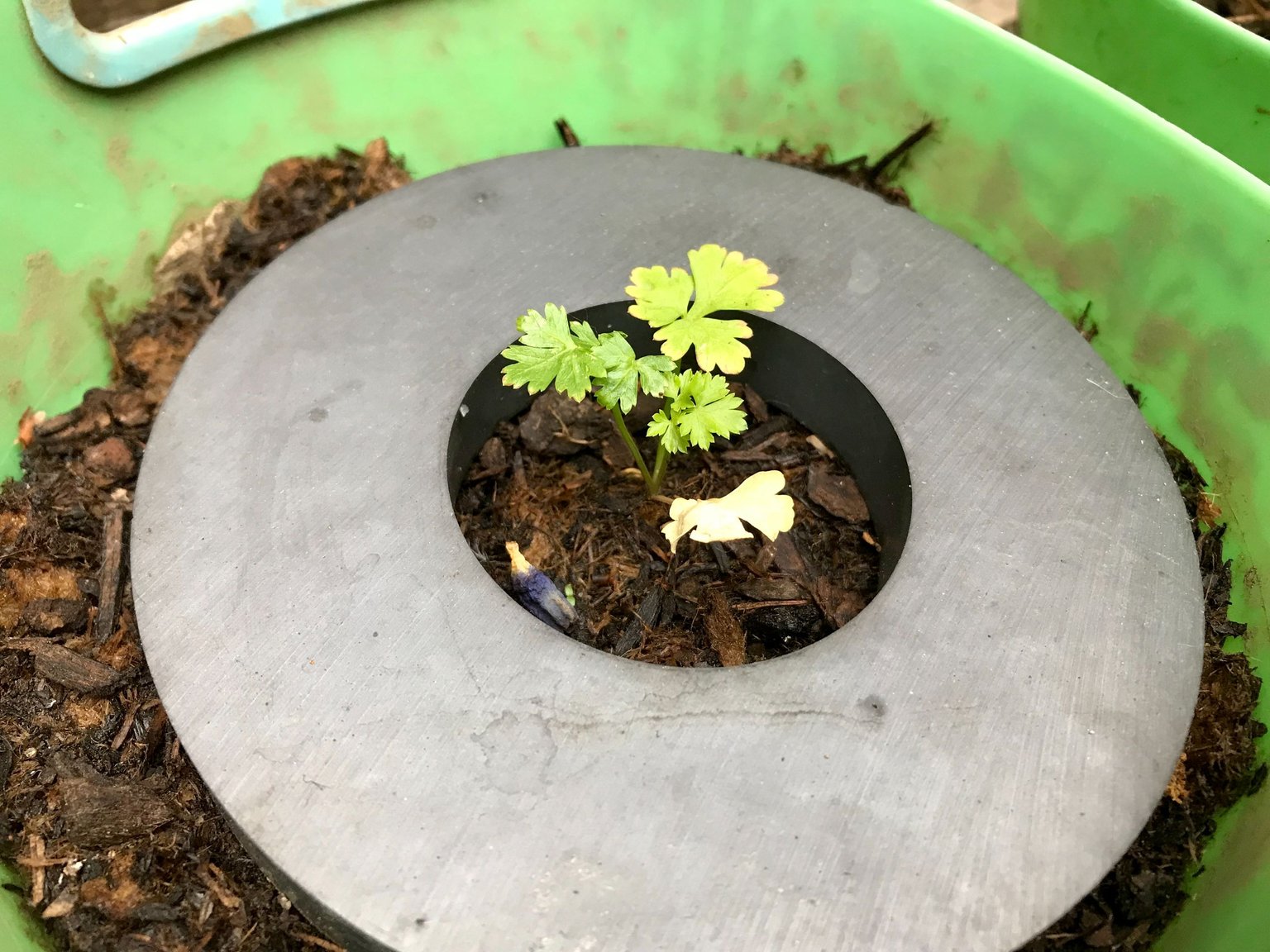
M3 looking pretty healthy now but not as big as M2.
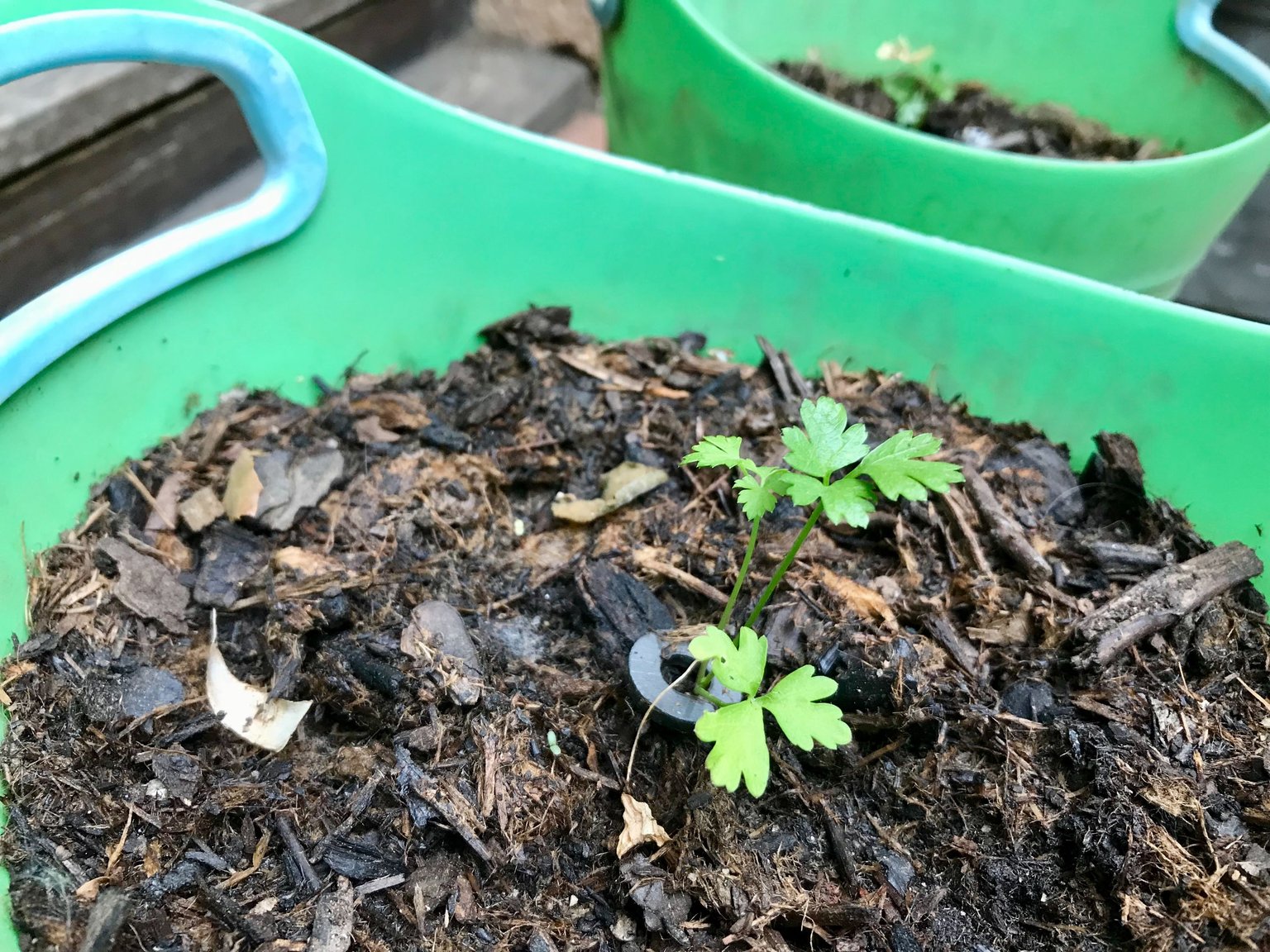
The control is the smallest and least developed.
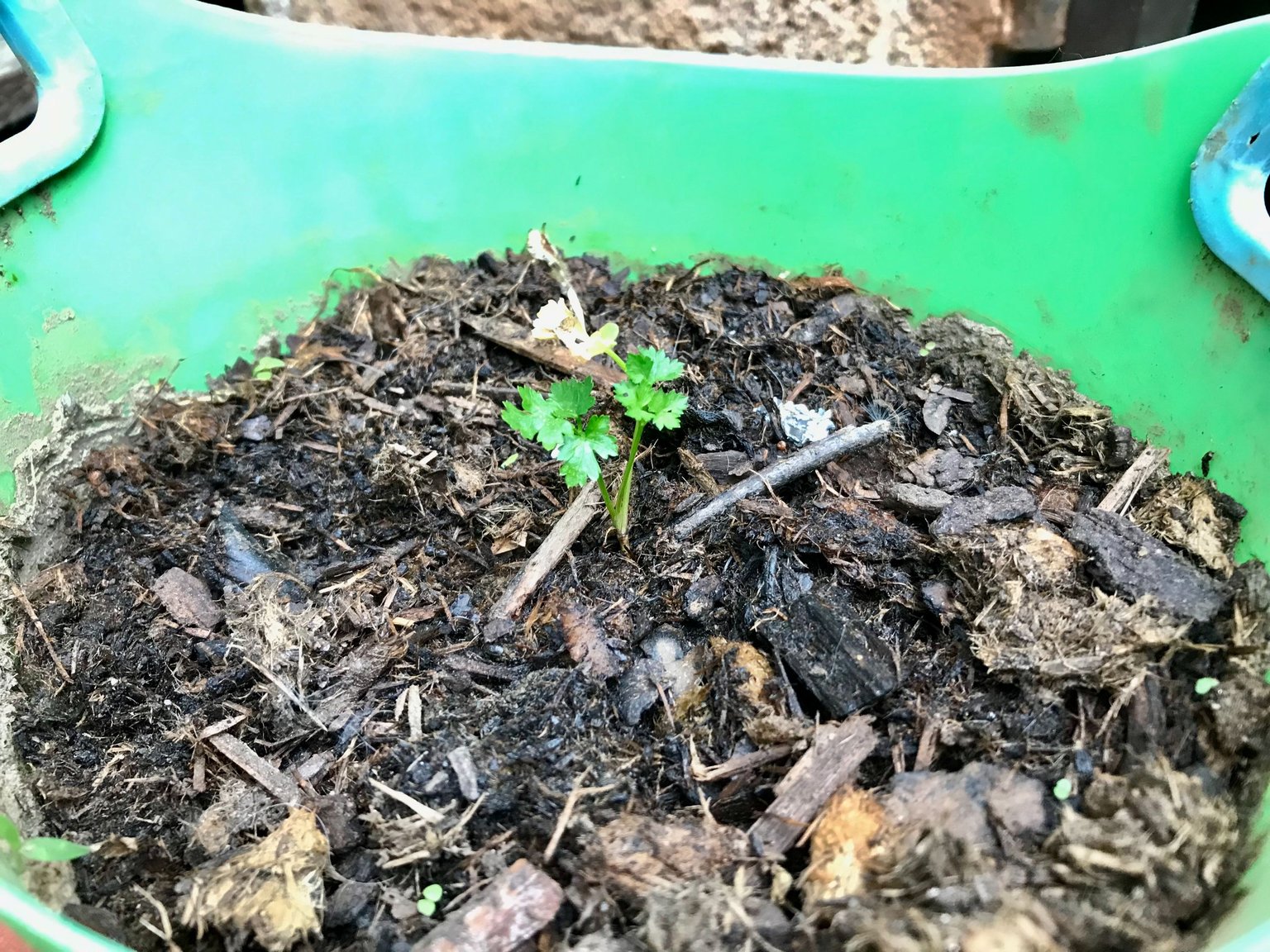
In conclusion I believe the largest magnet (M1) had a positive effect on the plant during those first days when it remained upright, but the long term effect was not a positive one.
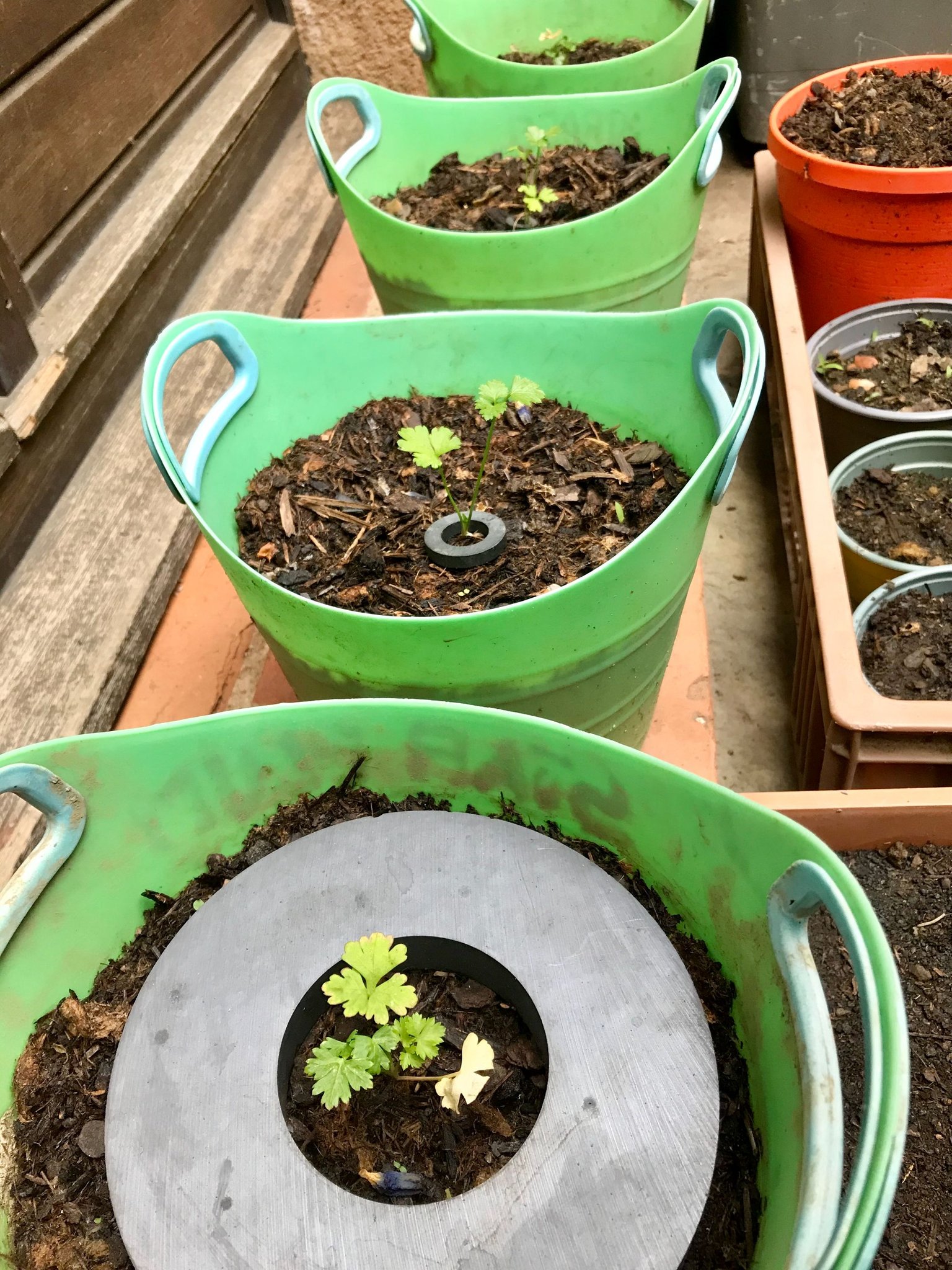
M2 grew the fastest, reaching a height of nearly 7cms while retaining its green colour, so in future I will place this size on transplanted parsley.
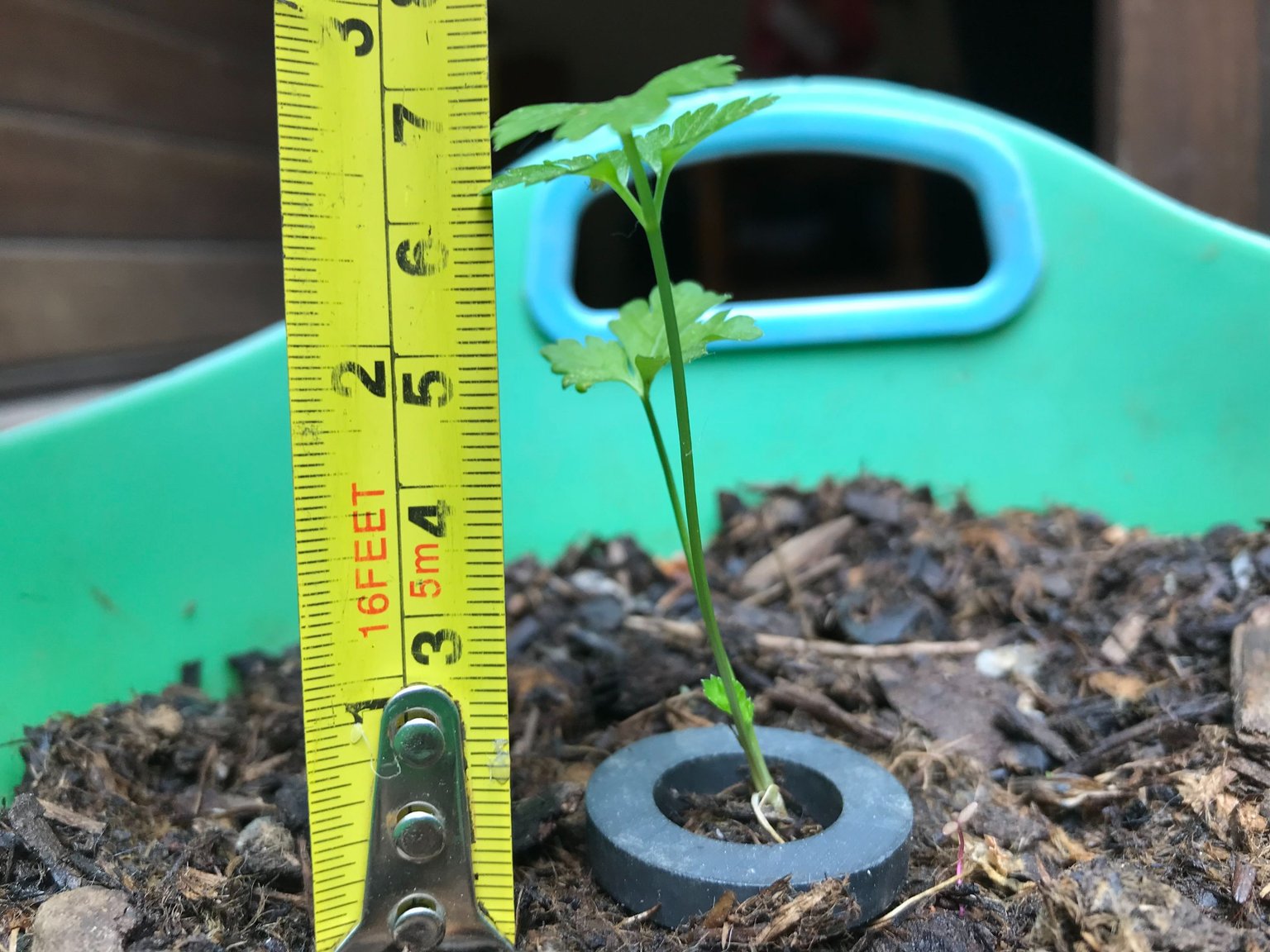
It was a similar story for the basil though as a plant which grows much slower than parsley, the results were not as clear.
As you can see, the control (right) is marginally smaller than the one in the centre, which is marginally smaller than the one on the left.
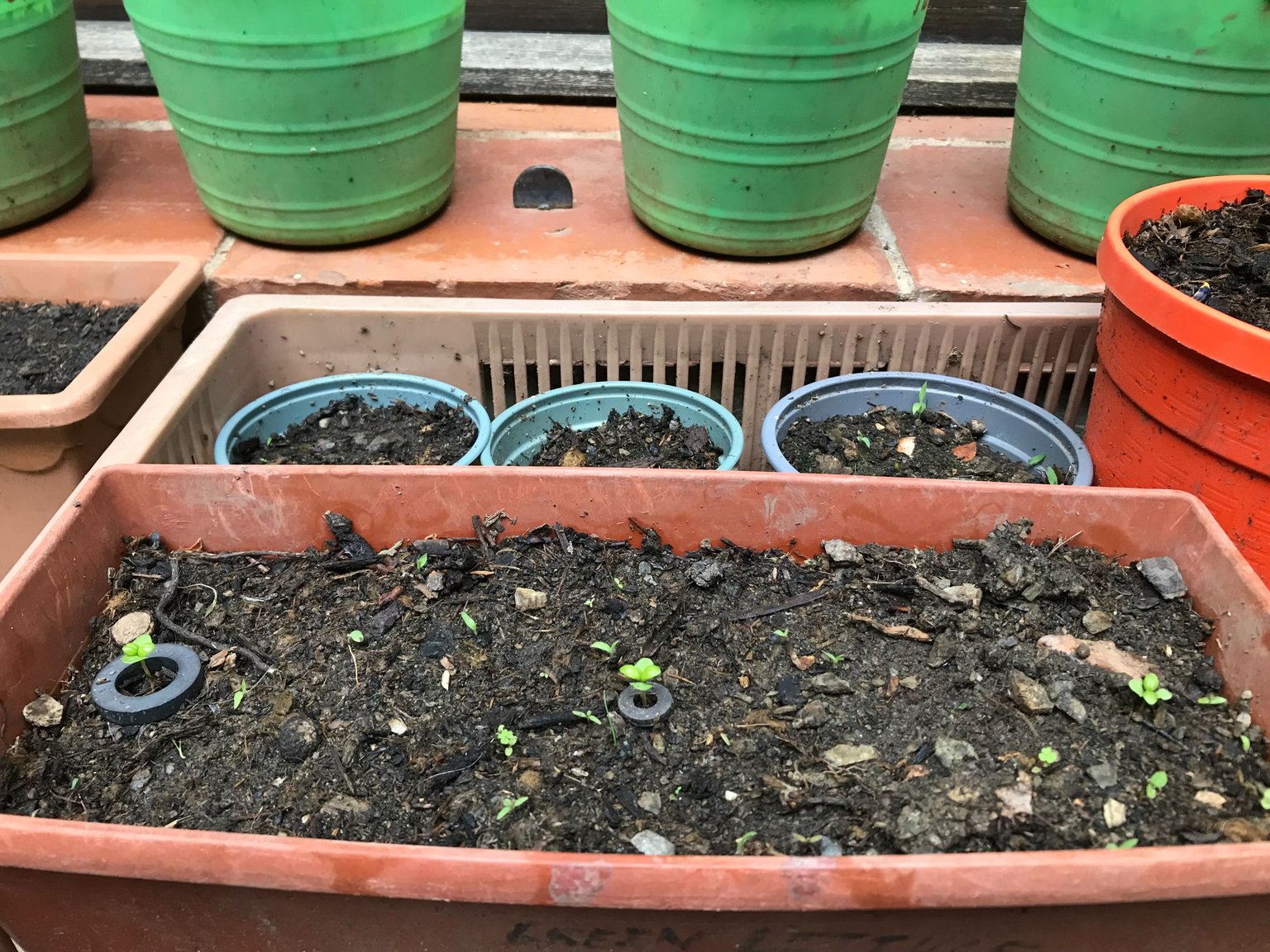
I had another test of note with the same sized basil involving four magnets facing their south polarity inward. However, and this is a big one, the basil in this pot was not transplanted into this position, but grew here from seed.
Despite at one point being the same size as all the others it was now substantially larger than the largest from the group.
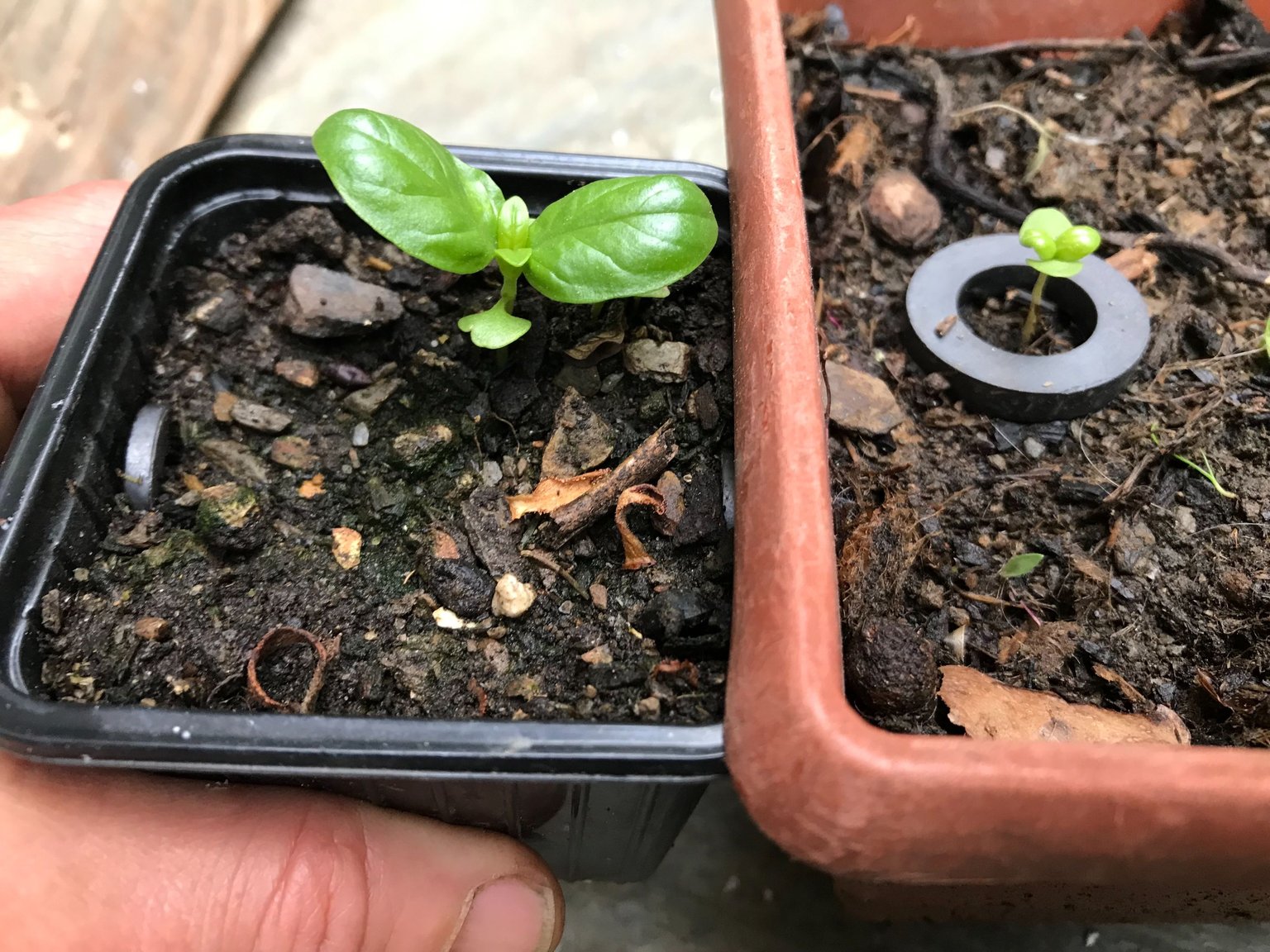
The control group measured 1.6cms.
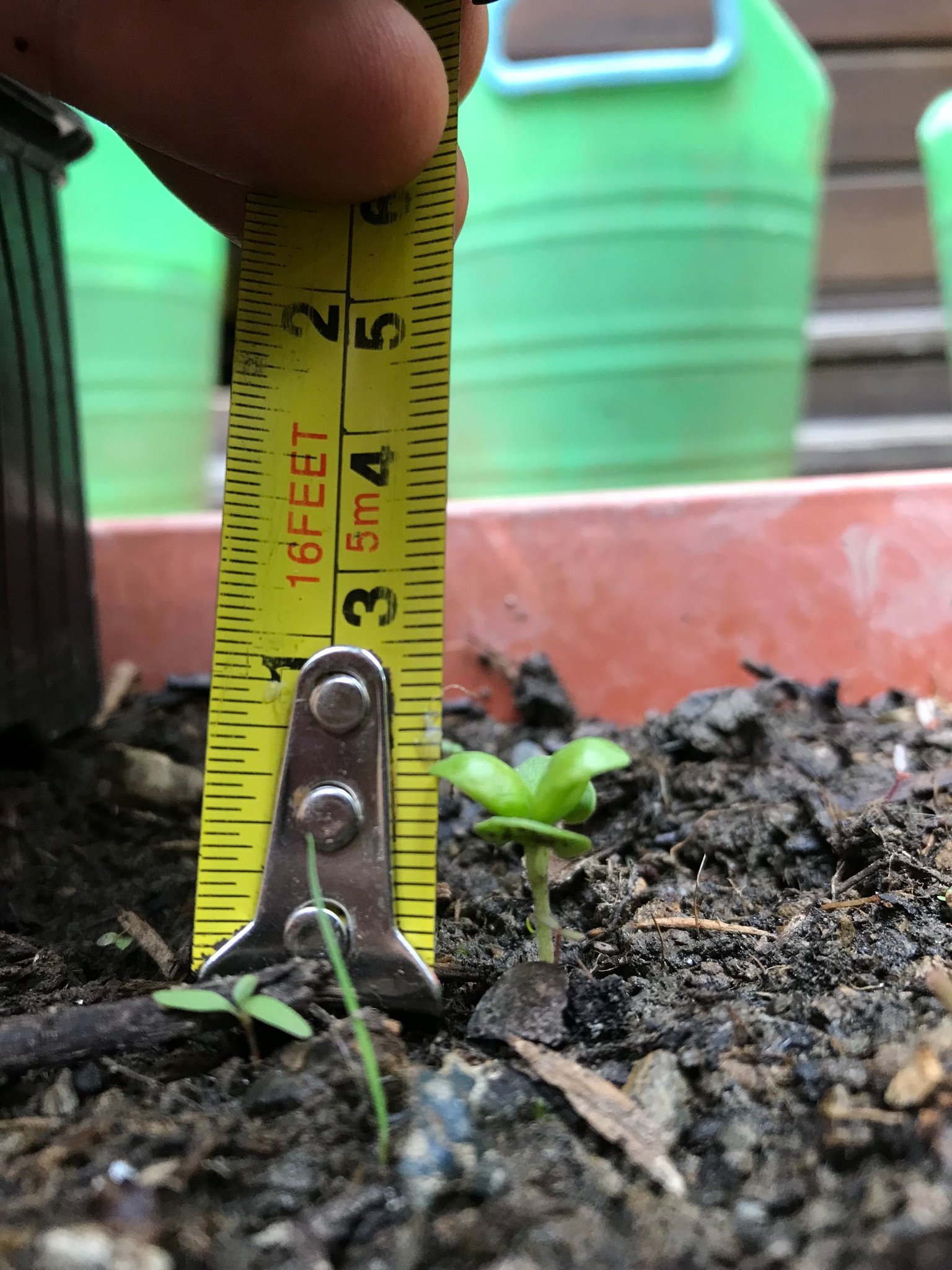
While the basil with the four magnets measured 3.4cms.

In conclusion to this category it seems clear again that magnets do affect the growth of basil but more tests need to be run using the transplanted basil for all comparisons. I will also run the test with clay pots to see if this improves effectiveness of magnets.
Finally we have the results of the sunflower experiment.
On the left we have the basalt group, the middle is the basalt & magnets group and on the right is the control.
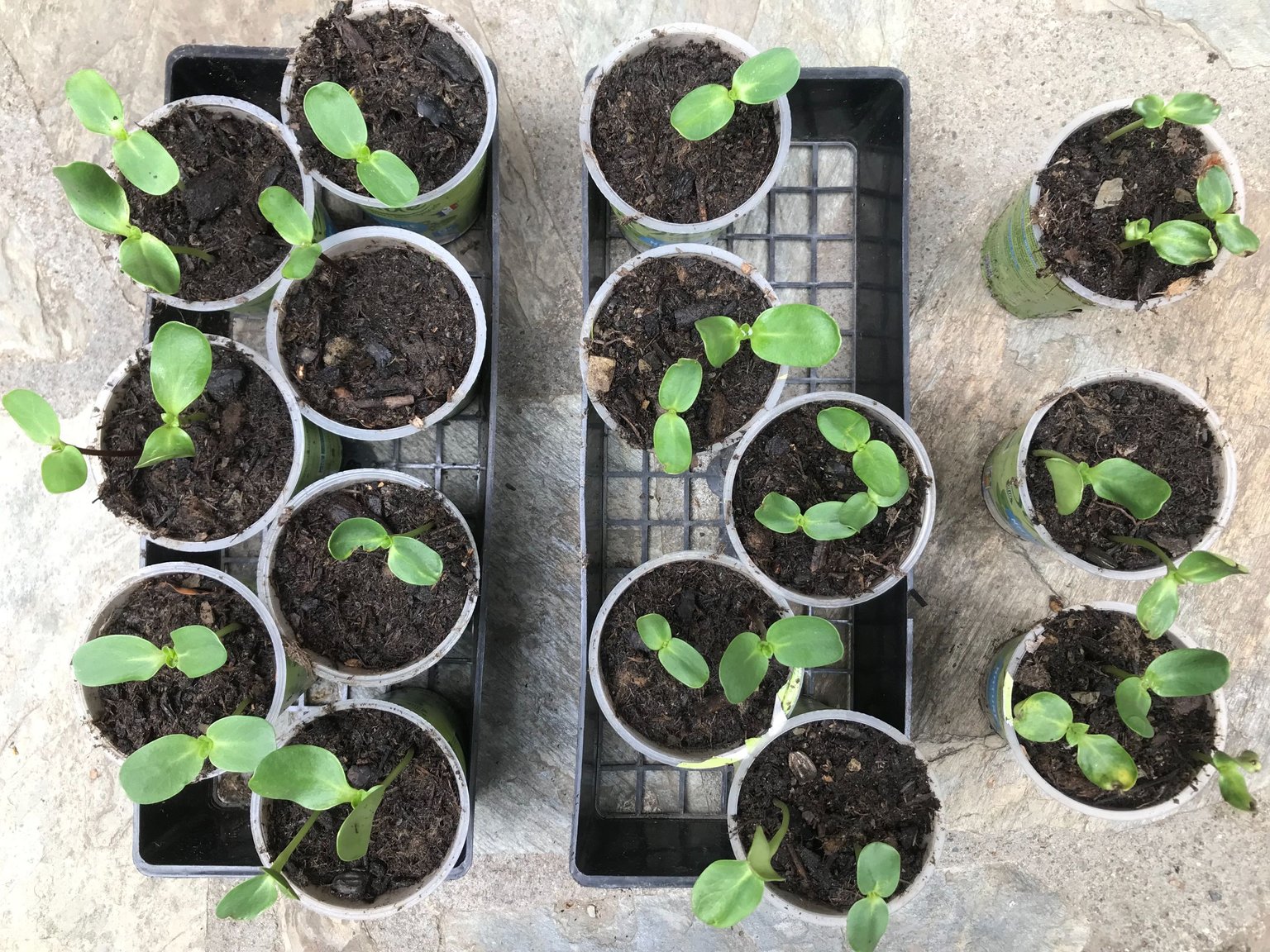
It was evident right away that the control group plants had more blemishes than the others and only two of the eight control group plants looked perfect.
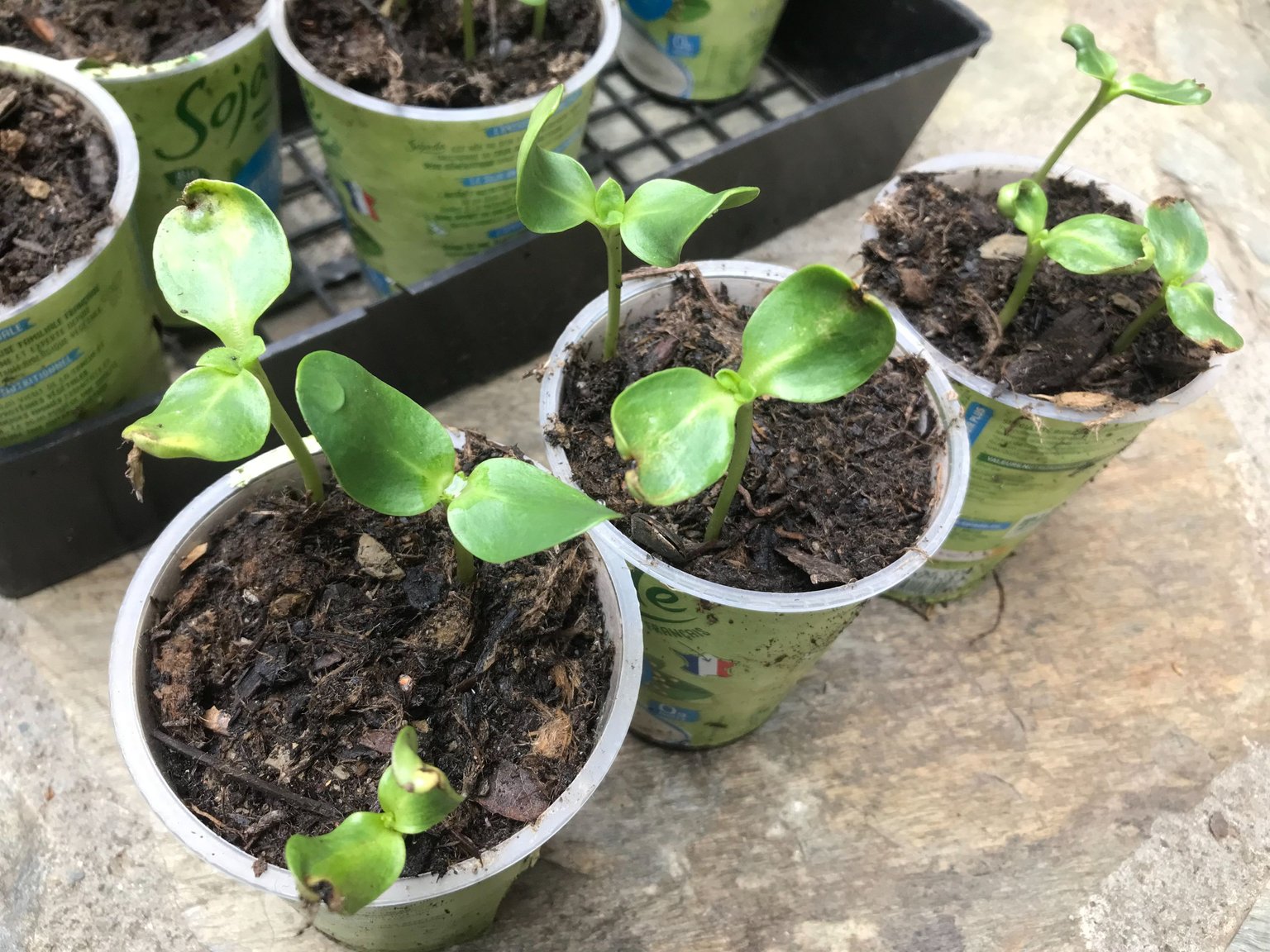
Six of them had these dark blemishes around the edges of the cotyledon leaves.
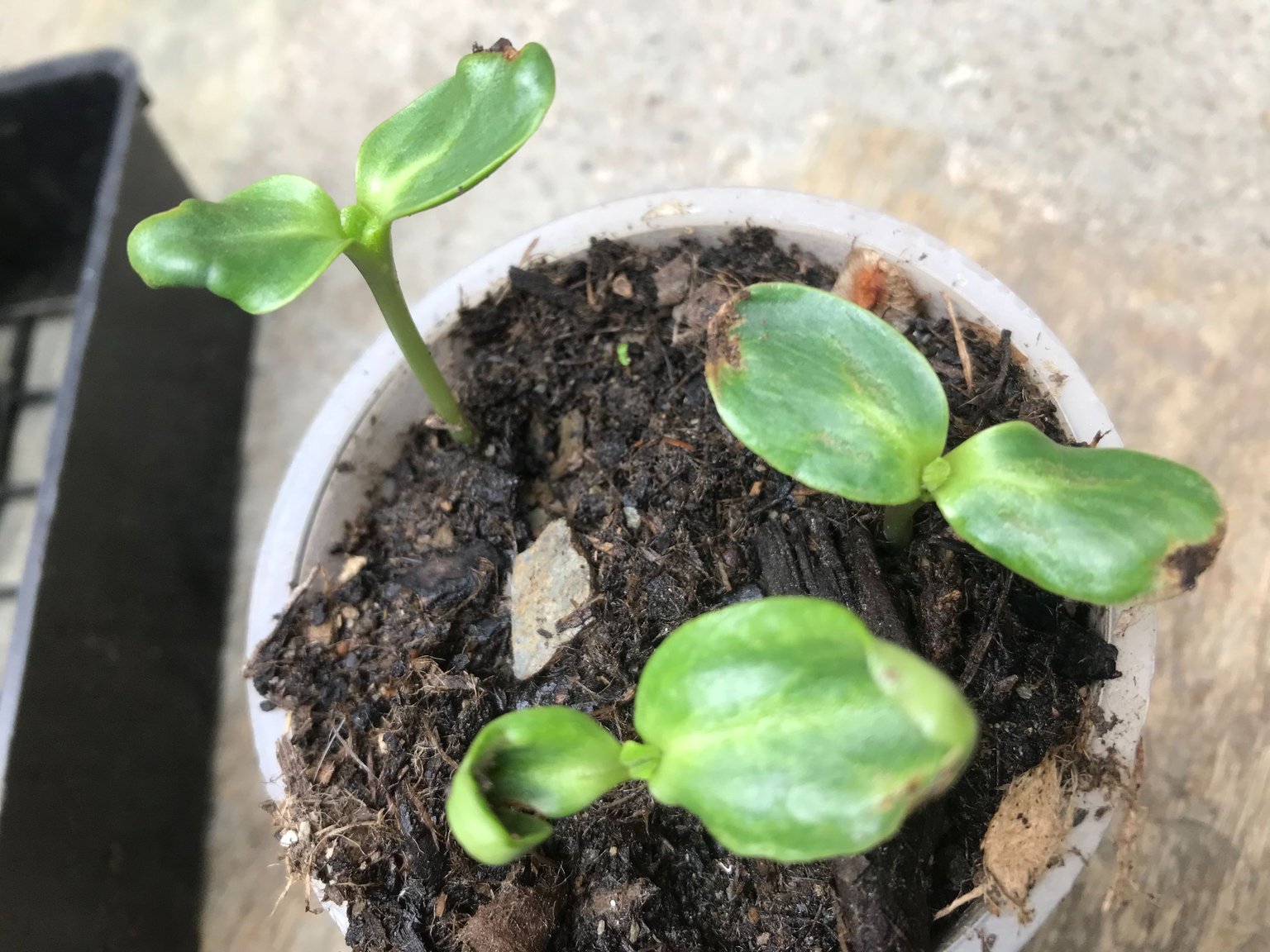
The height was similar between the three groups. Nothing to mention. Perhaps the basalt only (left) were a bit bigger than the others.

Here they are a few days later in the garden. In this shot we have the two basalt groups together because I could see no apparent difference between them.
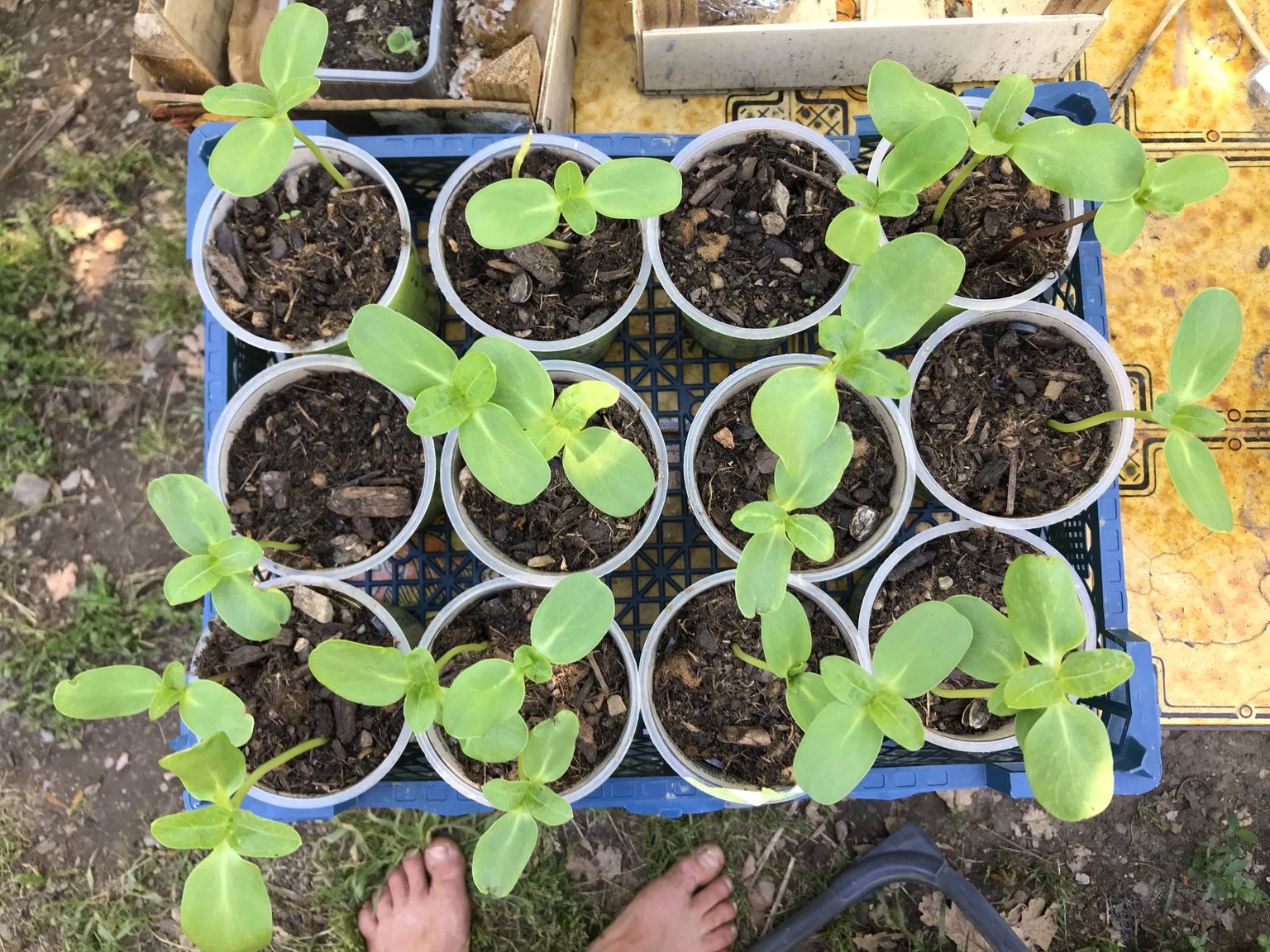
See how perfect they look with only a few with blemishes. Around 80% of them were perfect.
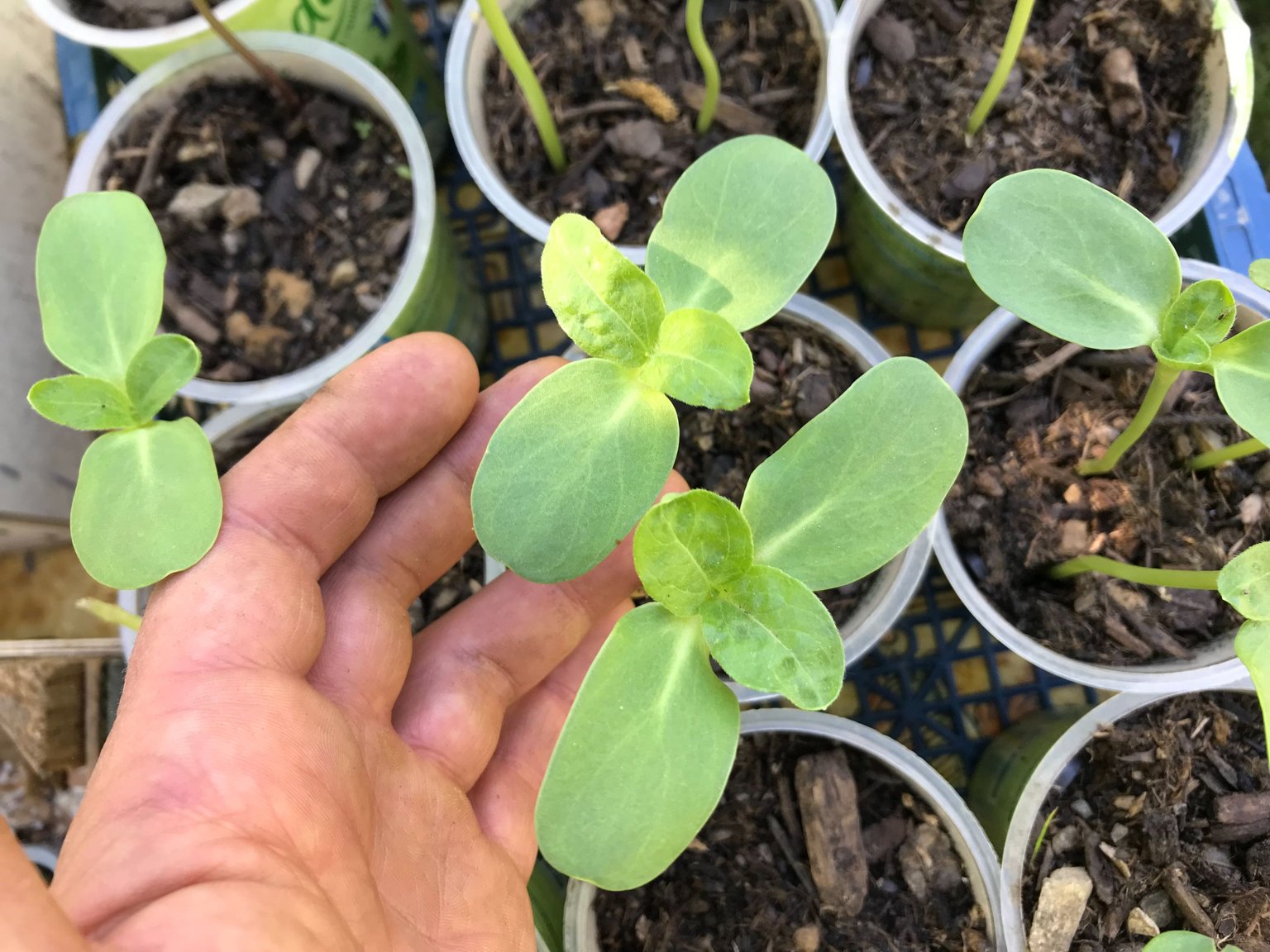
When compared to the control group without basalt what we have is the opposite. 80% of the plants have blemishes.
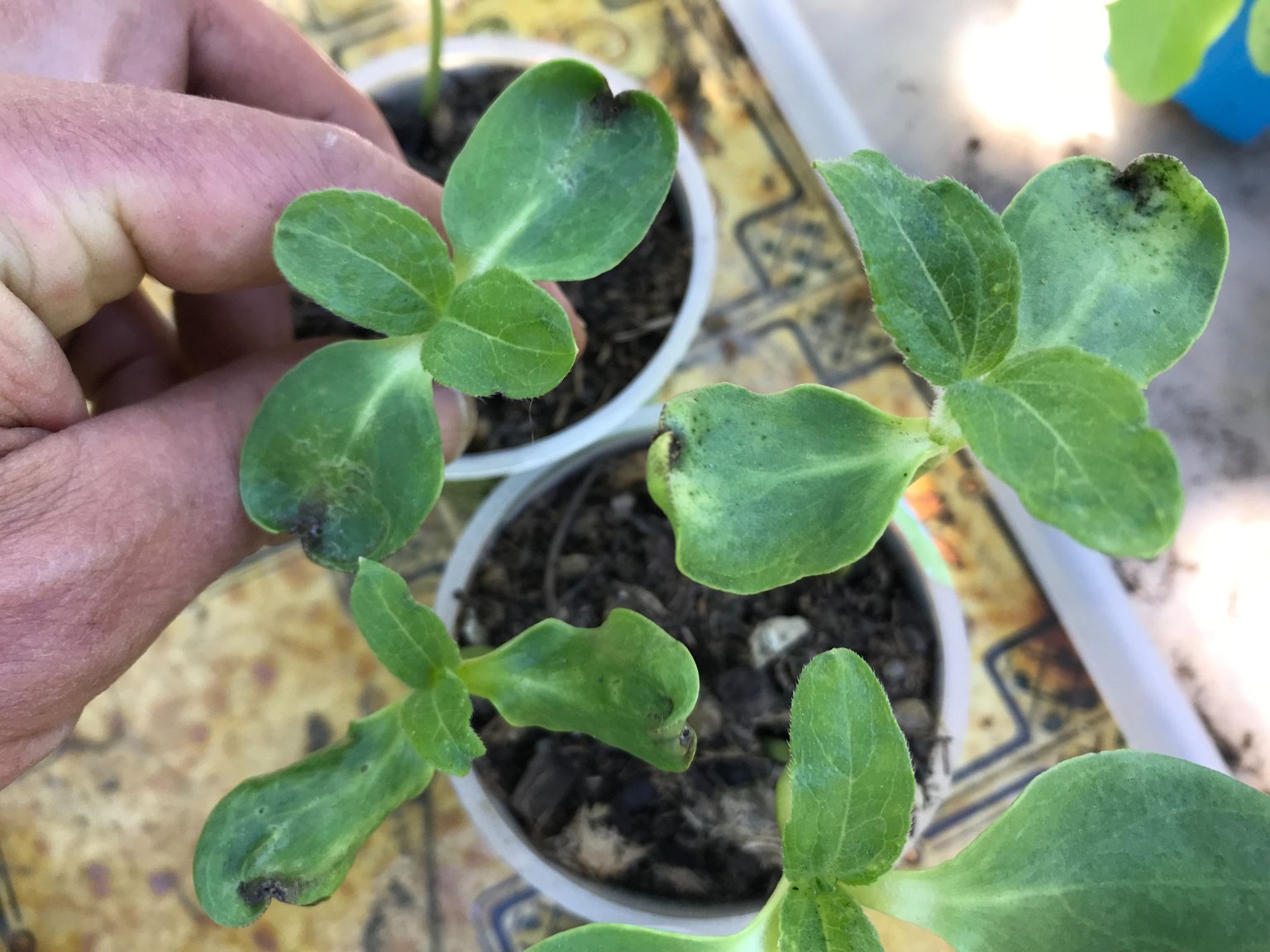
In conclusion I cannot really say what effect this will have on the adult life of the plant but I can say with certainty that adding basalt to your soil will improve the health of your seedlings, producing more perfect looking plants with less blemishes.
A little basalt for you to see here. Don't forget it has paramagnetic qualities so it acts in a similar way to the magnets but due to its powdered state it can be distributed around the roots of the plant.

To conclude this set of experiments (and others I have not mentioned here) I am convinced now that magnetism plays a key role in the growth of plants and while the ring magnets evidently work best on plants which match their size, basalt will work for most plants in most situations, if you can dig it into the soil before the roots develop.
Ferrite magnets the size of M1 should be reserved for small trees rather than small transplants which are still developing their roots.
With that said, I am currently testing it out on this developed sweetcorn, to see if it outgrow the others.
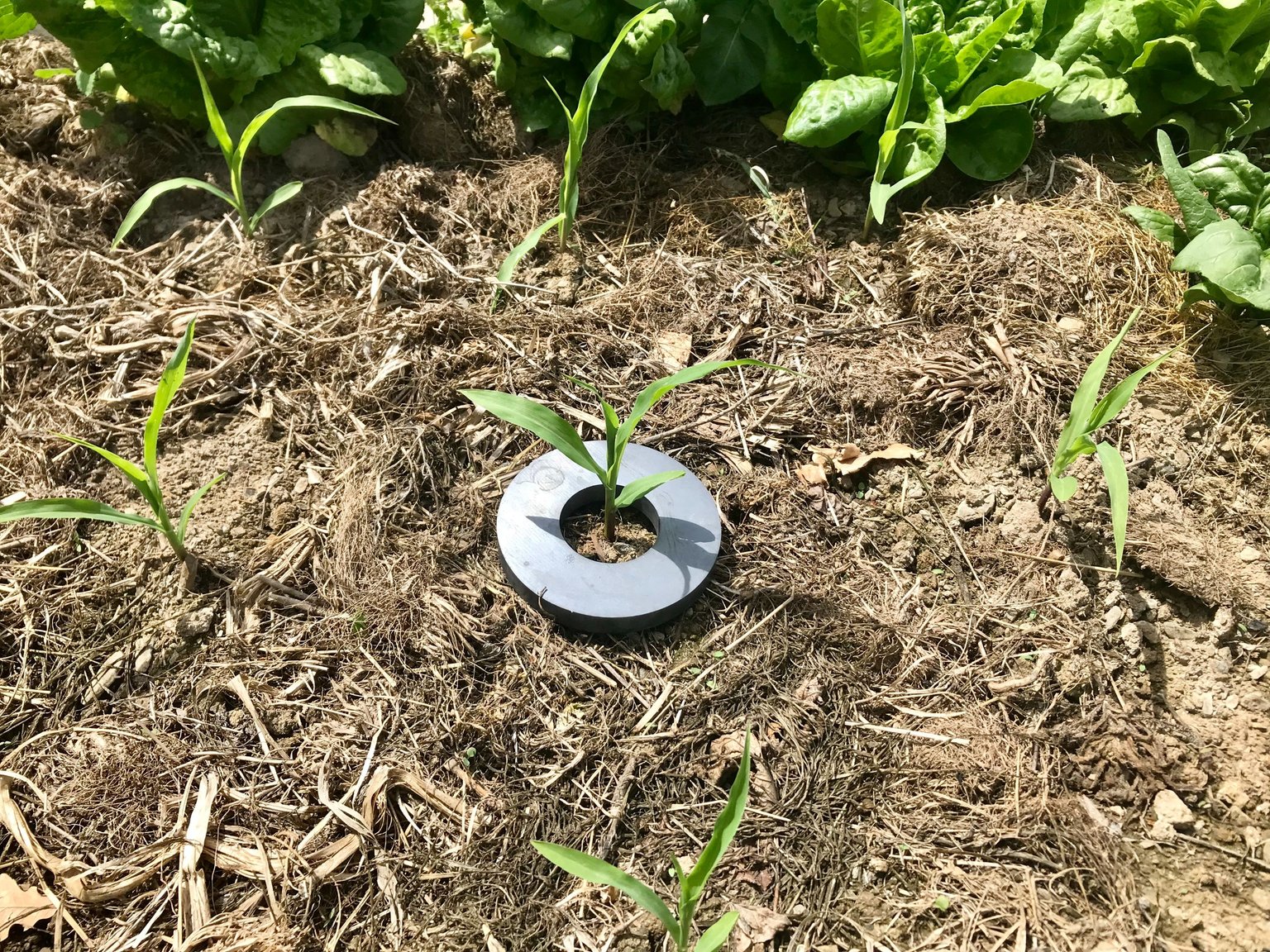
Think that's it for now.
For me the results of this one are clear and I will be buying more basalt & magnets as soon as I can.
Love & Light everyone 🌱
